|
Week ending: 26th June: Aberlady, Port Seton and Musselburgh
I was on my own again this week as John couldn’t make it. The weather predictions for Central
Scotland were rather pessimistic - brief spells of sunshine in the morning but clouding over from
the west with rain as the day progresses. I therefore chose to go east, specifically Aberlady LNR.
In order to maximise my time in dry conditions I passed on a Morrisons’ breakfast, opting instead
for a bowl of cornflakes and a banana before leaving the house.
It was overcast when I arrived at Aberlady and the tide was very low. I spotted a Little Egret standing by the Peffer Burn as I drove in. As I photographed it, it flew a little closer. I followed that
nice start with a quick shot of a White-tailed Bumblebee on Viper’s Bugloss. I scanned the Burn
from the wooden footbridge but all I saw was a lonely Black-headed Gull standing mid-burn. Next
I just about captured a picture of an Early Bumblebee on Wild Thyme at a favourite area of grass
just off the footpath where as well as bees, John and I usually find Orchids and Butterflies.
| Little Egret |
White - tailed Bumblebee |
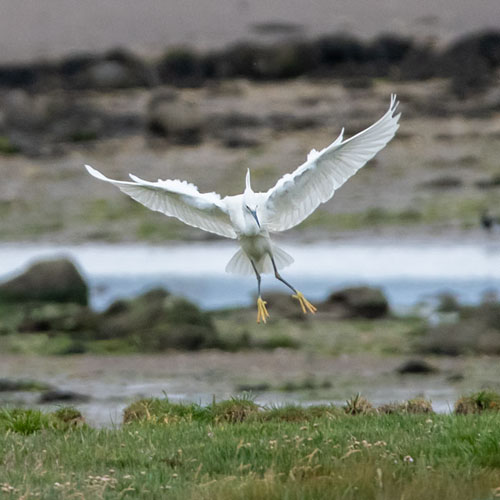 |
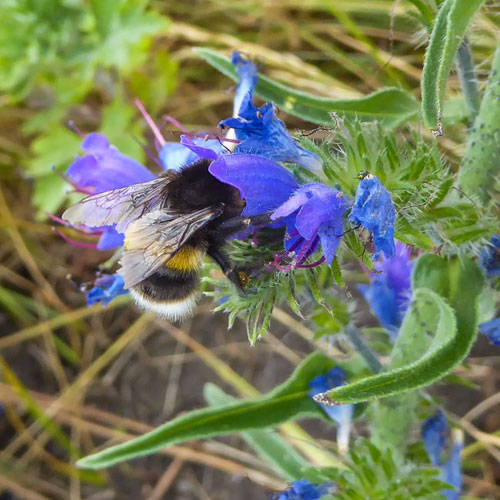 |
| Black - headed Gull |
Early Bumblebee |
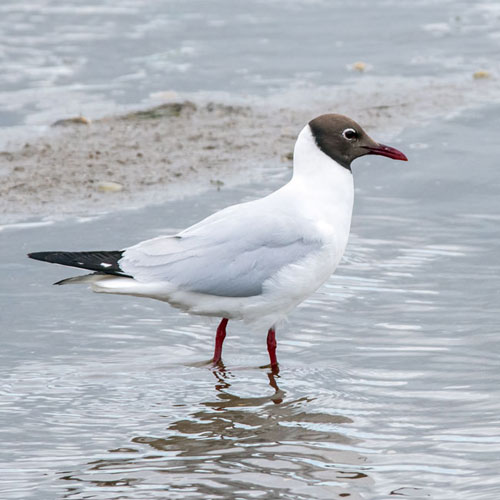 |
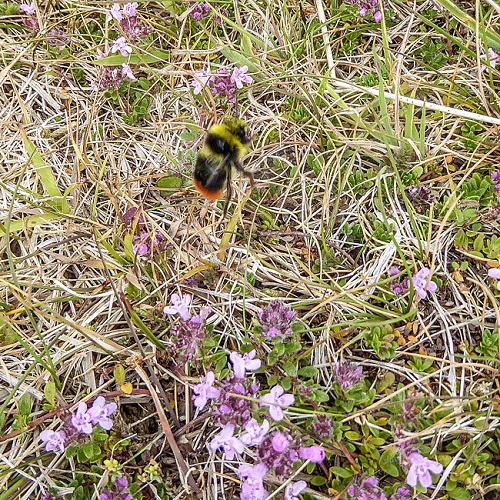 |
In the grassy area I immediately spotted 3 species of orchid : Northern Marsh Orchids,
Common Spotted Marsh Orchid and Common Twayblade. A few heads of Cottongrass were
fluttering vigorously in stiff, but mild, wind.
| Northern Marsh Orchid |
Common Spotted Orchid |
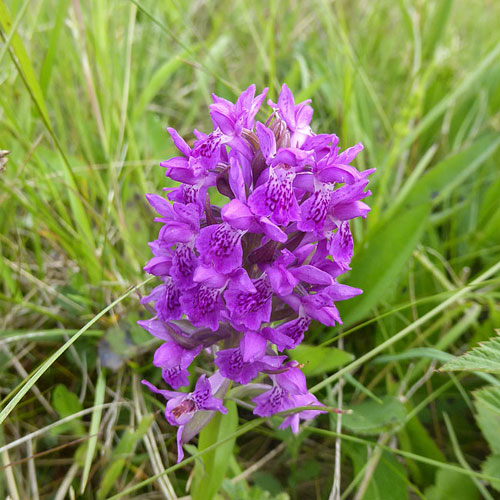 |
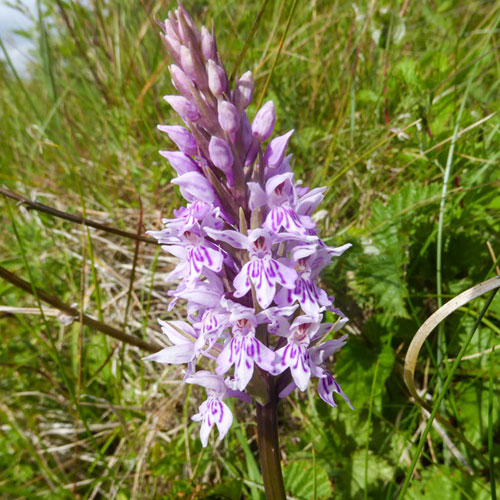 |
| Common Twayblade |
Cottongrass |
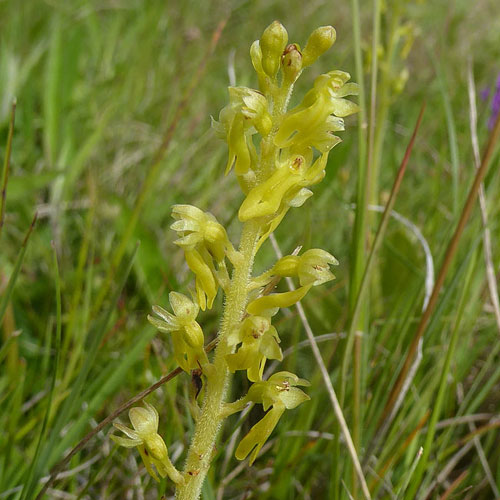 |
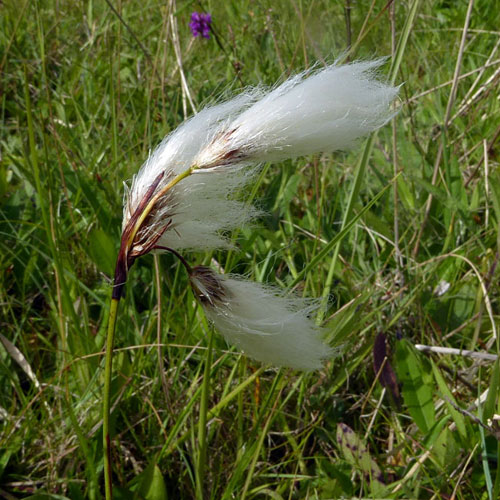 |
It was rather windy for butterflies but I did see a Small Heath sheltering in the grass. There were
also quite a few 6-spot Burnet Moths feeding on Viper’s Bugloss. Whilst snapping these I
discovered some Ragged Robin flowers and also Tufted Vetch. On my way back on to the main
path I also took pictures of Lady’s Bedstraw and Restharrow that were thriving along the path’s
edge.
| Small Heath Butterfly |
6 Spot Burnet Moth |
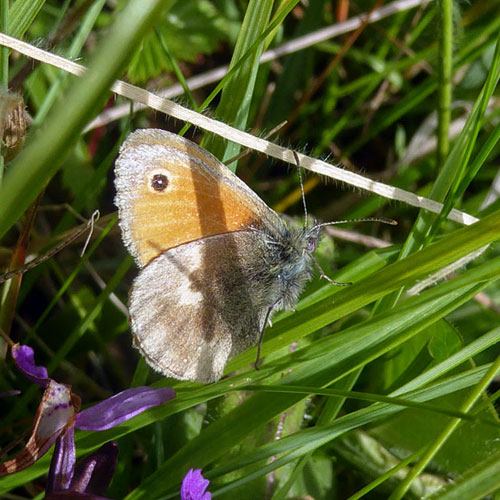 |
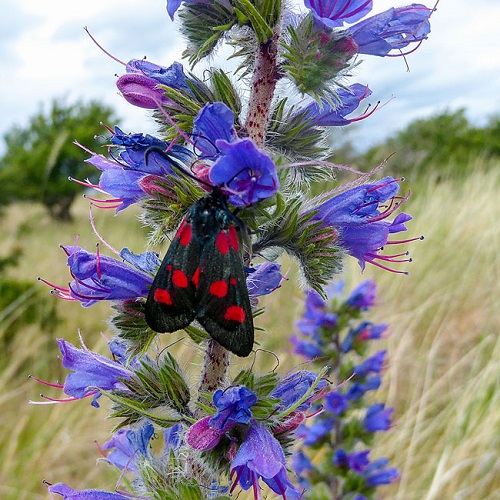 |
| Ragged Robin |
Tufted Vetch |
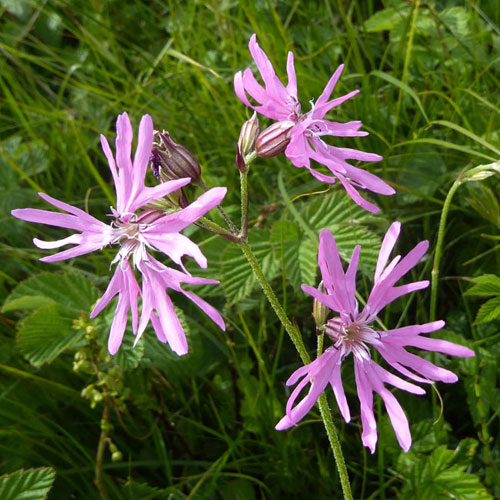 |
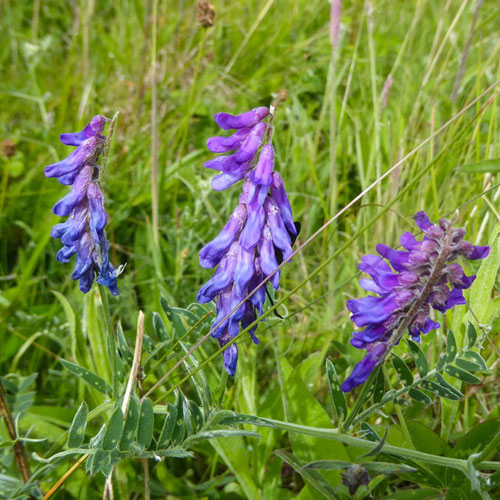 |
| Lady's Bedstraw |
Common Restharrow |
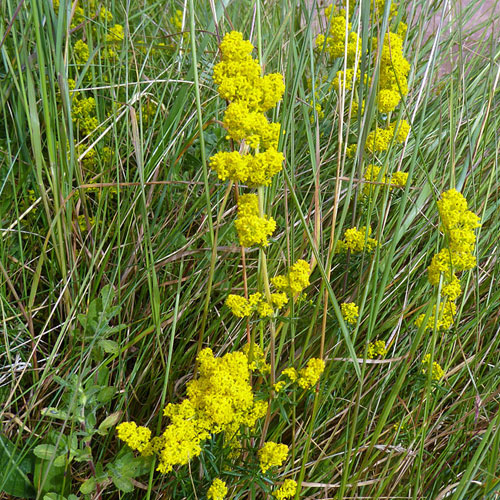 |
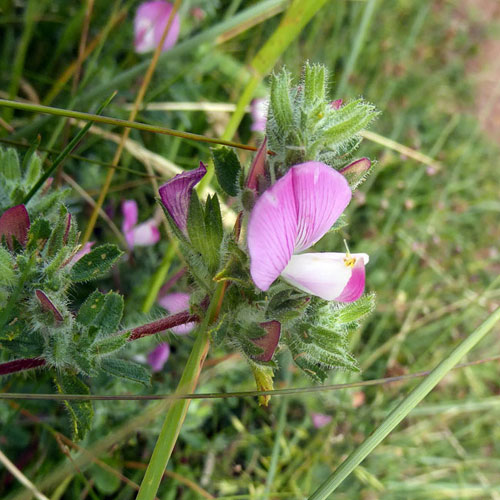 |
My walk through the reserve continued along a path which led to a passage through Sea
Buckthorns. I had a a close encounter with a Speckled Wood butterfly which, at one point, I
thought would land on me. I also found Bittersweet, with its pendulous pretty purple and yellow
flowers draped over a Buckthorn bush. I emerged from the passage to find Marl Loch to my left
and fields to my right. The small loch was birdless but as I continued along the main footpath
there was a Magpie was sitting on a fence post. As I slowly moved towards it, a Skylark shot up
from the field, and it began an outpouring of song the continued as I walked on. Another
persistent songster was a Meadow Pipit singing as it sat on top of a massive concrete
block. The path reached part of Gullane Golf Course where I heard the call of a Pheasant. It was
well up the slope and, as golfers would say, was in “deep rough”.
| Speckled Wood Butterfly |
Bittersweet |
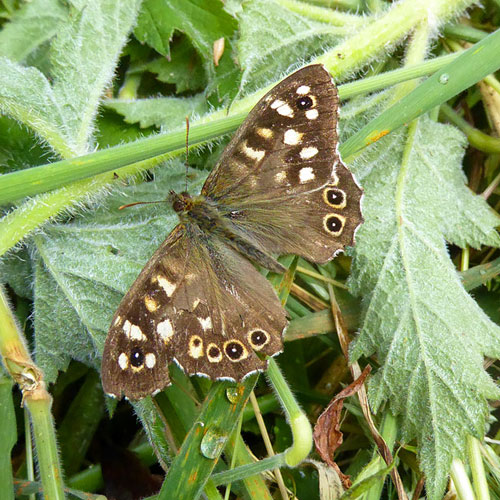 |
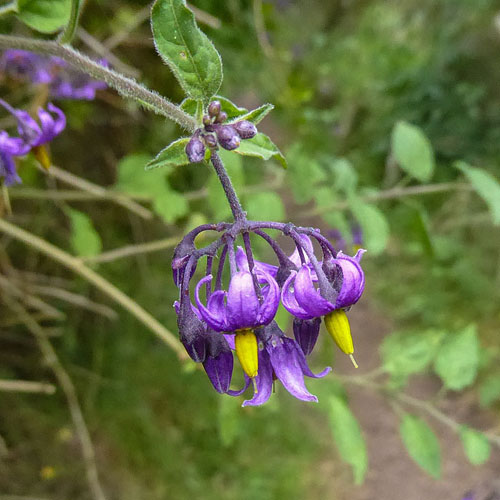 |
| Magpie |
Skylark |
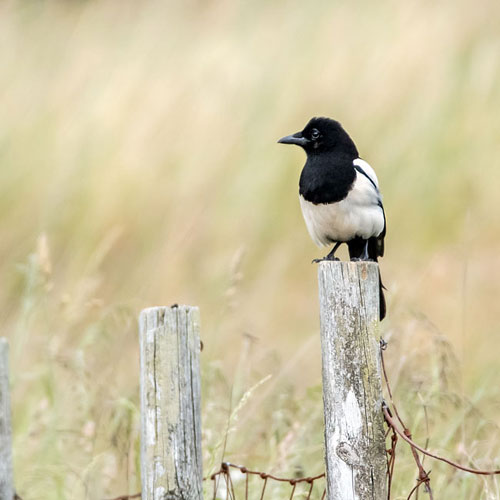 |
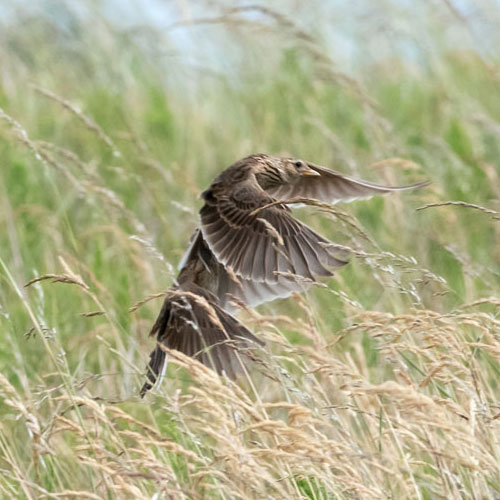 |
| Meadow Pipit |
Pheasant |
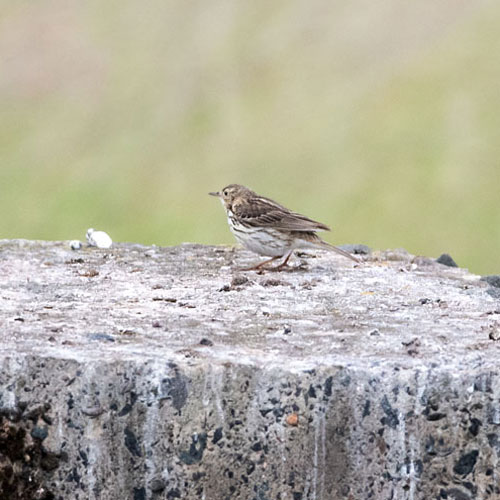 |
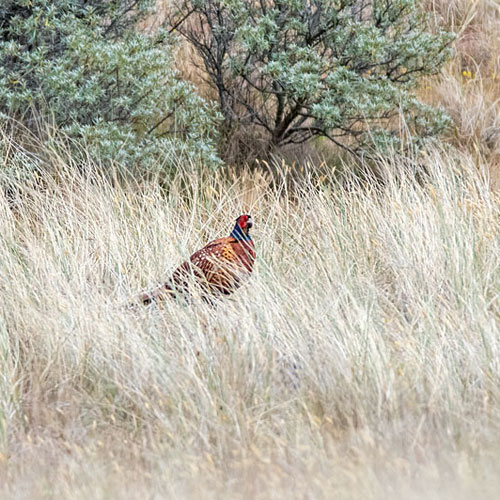 |
Where the path forked I chose the left which would take me to the dunes and beach. I found
some areas of very short grass that were carpeted in places with Sea Milkwort, a plant with tiny
but beautiful pink flowers. My passage across that area was watched by a vigilant Rabbit. I was
startled though by a pair of Pipits, probably Tree Pipits , that leapt chirping from behind a
large mound before descending onto a low Hawthorn bush. I next heard the hesitant call of a
Reed Bunting. I quickly found it on another Hawthorn.
| Sea Milkwort |
Rabbit |
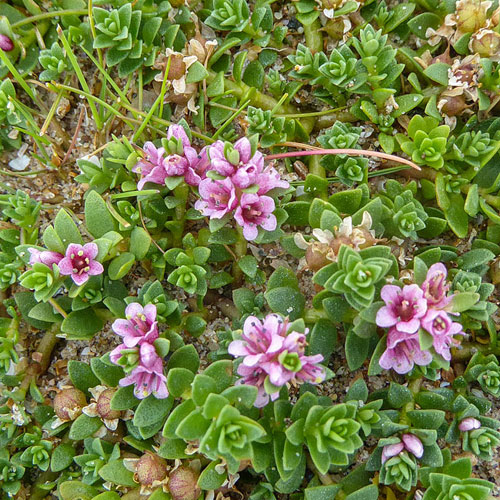 |
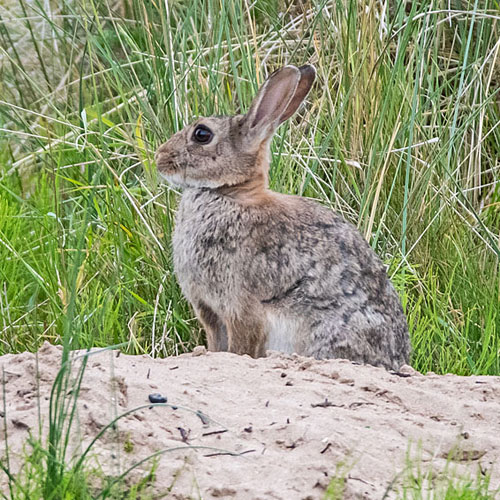 |
| Tree Pipit |
Reed Bunting |
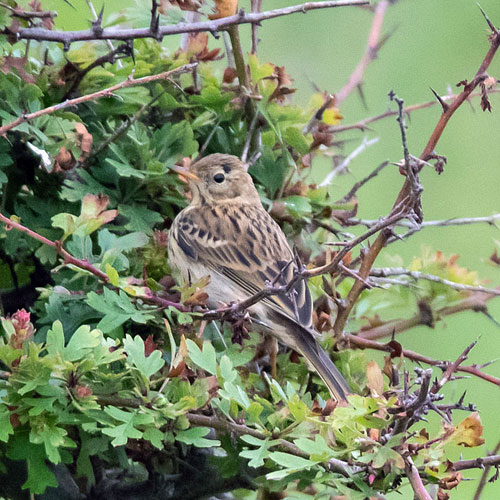 |
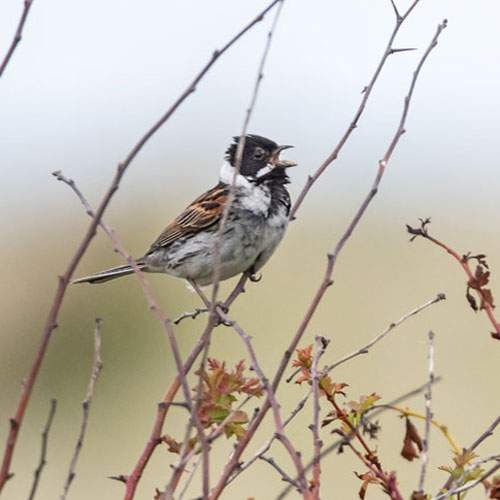 |
The beach was devoid of birds, but not people. Looking west I could see the familiar, if rather
gloomy profile of Arthur’s Seat and Edinburgh.
I trekked back to Marl Loch rather disappointed that my visit to the beach was fruitless. However,
I was pleased to see a Skylark sitting on the path in front of me. Maybe it was saying “keep
looking as you never know what’s ahead”. The Sun came out in spells and I got a nice shot of
some Eyebright, another flower in the “tiny but beautiful” category. Just before the footbridge I
watched a Woodpigeon watching me as I passed by. My final capture at Aberlady was a long shot
of a Curlew that flew in and landed close to the Little Egret I’d photographed earlier.
| Skylark |
Eyebright |
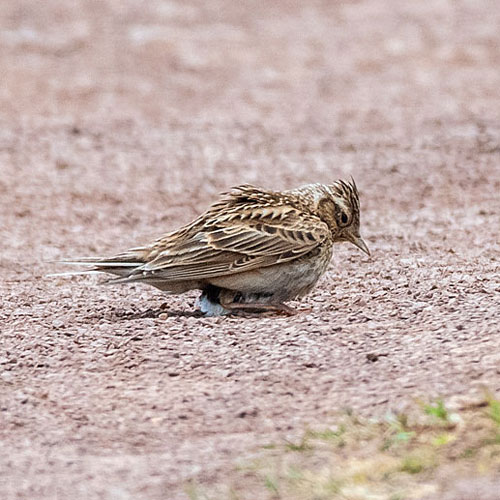 |
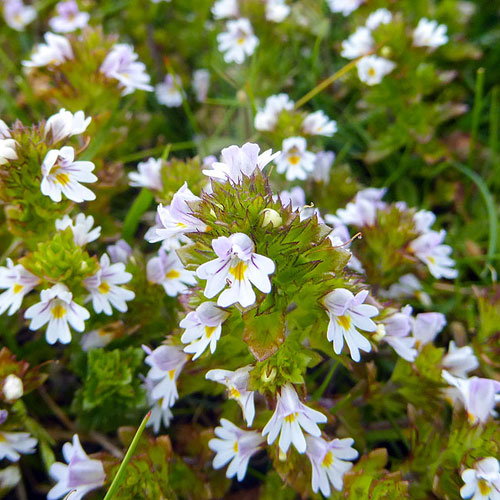 |
| Wood Pigeon |
Curlew |
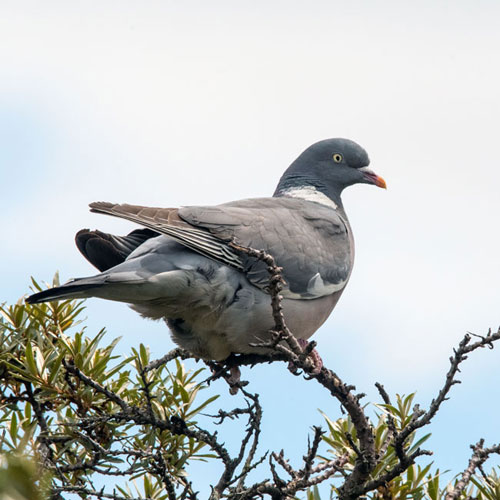 |
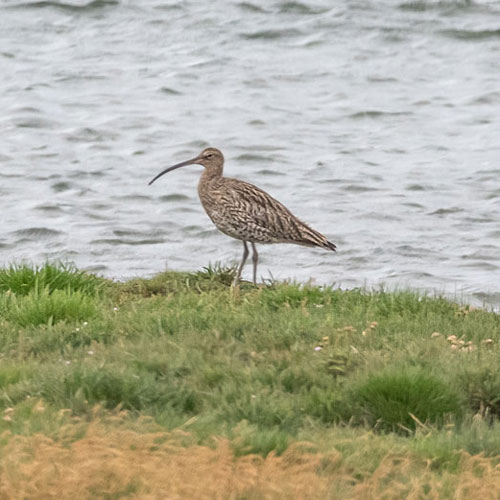 |
My next idea was to revisit Musselburgh to try to see the King Eider juvenile I missed last week. I
stopped briefly at Port Seton to check if I could see the reported leucistic Bar-tailed Godwit
was present - it was. With it on one of the Wrecked Craigs were other Godwits, Herring Gulls and
Oystercatchers.
I swiftly moved on to the mouth of the River Esk in Musselburgh and set off along the path by the
sea wall watching for Eiders . There were lots of Mute Swans near the wall but further along
I had mixed feelings when I saw a flock of over 100 Eiders, most of whom were sleeping with their
beaks tucked under their wings. It was an awesome sight but their plumages were mostly untidy
and patternless brown and patchworks. It was going to be very difficult to find the King Eider. However, I patiently checked each bird for signs that it might have been the juvenile King
Eider - light breast, but little on no white on a back of mainly light brown feathers, bright red and
orange on the beak. Sadly I could see no bird fitting that description.
| Mute Swan |
Drake Eider |
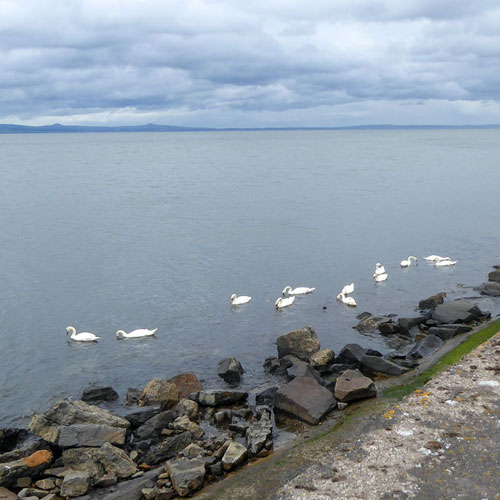 |
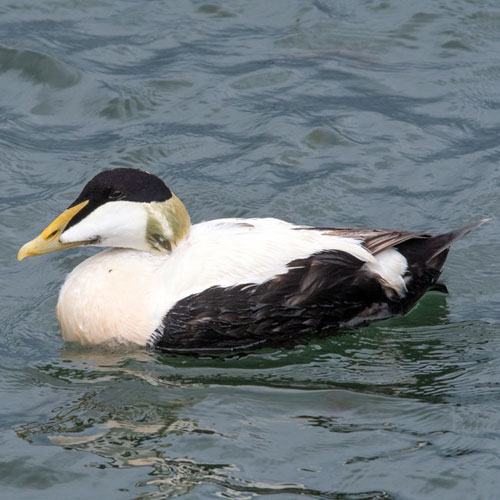 |
| Eider in Eclipse plumage |
Female Eider |
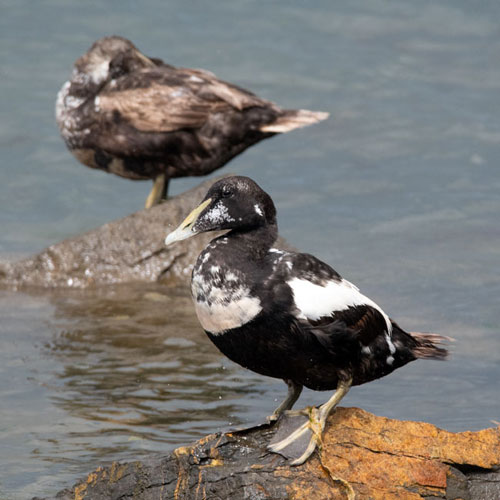 |
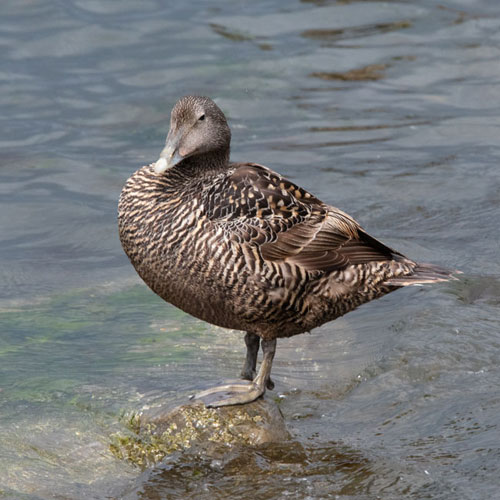 |
Little families of Eider were sheltering on the rocks below the sea wall.
A lone walker on the opposite side of the river disturbed the many roosting birds. Suddenly
Cormorants and Eiders were in a flap. The entire Goosander flock took to the water and paddled
quickly into the Firth. The Carrion Crows were less concerned.
| Cormorant |
Eider in Eclipse plumage |
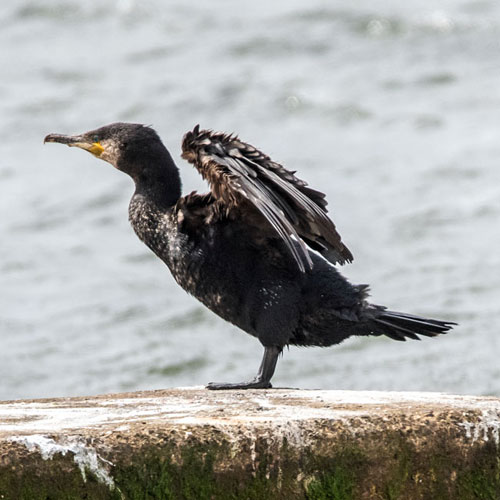 |
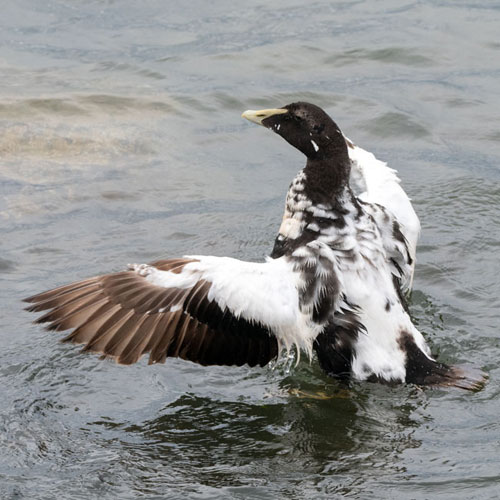 |
| Goosander |
Carrion Crow |
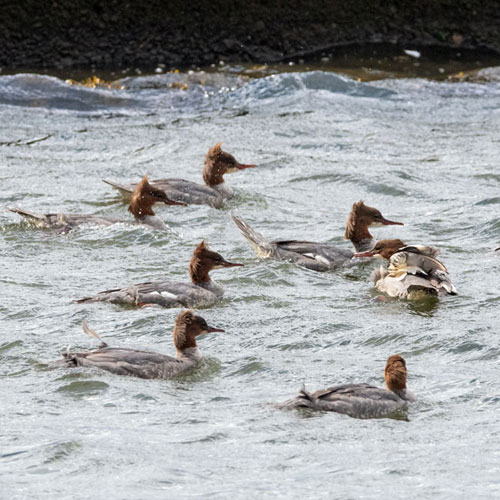 |
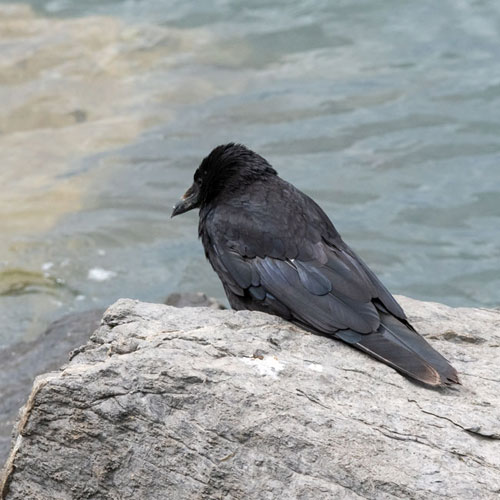 |
I had a thrilling conclusion to my visit when a number of Terns appeared on the scene and
proceeded to dive for fish. I captured shots of a successful Common Tern singing its delight
as it flew off with its catch. There were also close passes of Sandwich Terns. As I
photographed the Terns a cute Eider duckling paddled close to the wall where I was standing. I
finished the day with a satisfying shot of a large Cormorant flying down the river.
| Common Tern |
Sandwich Tern |
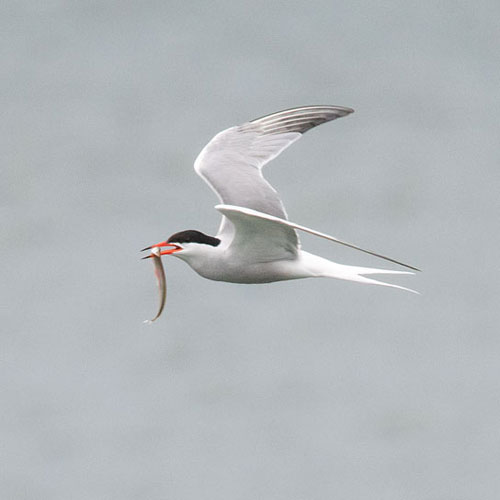 |
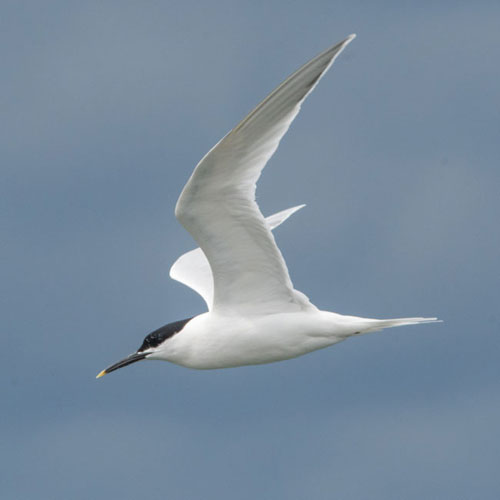 |
| Juvenile Eider |
Cormorant |
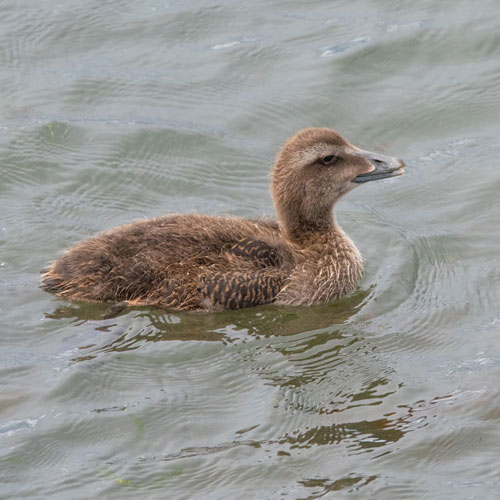 |
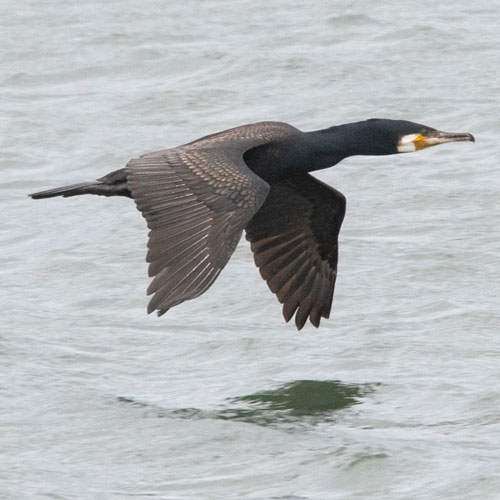 |
In terms of bird sightings the outing finished better than it started. However, I got a good haul of
insect and flower sightings. Highlights were the orchids and butterflies. Of the birds my favourites
were the Terns. There’s never a dull moment with a Tern. I had a quick cup of tea and a chocolate
biscuit before driving home fairly satisfied with pictures. Maybe summer will arrive next week.
Week ending: 19th June 2022: Musselburgh
The weather prediction for Scottish central belt was similar throughout: mild with sunny intervals. I
thought then that I would try Musselburgh where there had been recent sightings of an immature
King Eider . As I headed there, a tweet announced that it was in the mouth of the Esk only
one hour before so I went straight there, forgoing my usual Morrisons breakfast.
When I arrived the tide was very low and the nearest Eiders I could see were at least 300m out.
Undaunted, I set off along the seawall towards the Scrapes to see what I could see. I got off to a
nice start when I snapped a Goldfinch foraging on the damp banks of the Eskmouth. This was
followed by a shot of some Common Mallow growing by the pathside. Of course there were the
usual Herring Gulls on the shore, but I am one of the few people who loves gulls so I never tire of
photographing them.
| Goldfinch |
Common Mallow |
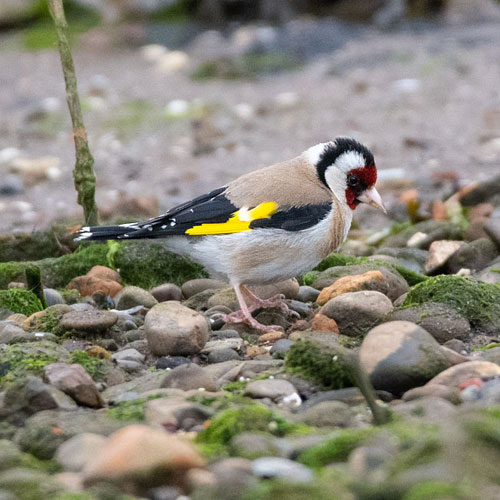 |
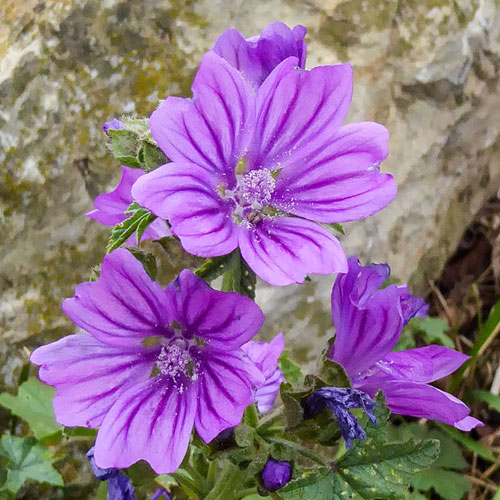 |
| Herring Gull |
1st Cycle Herring Gull |
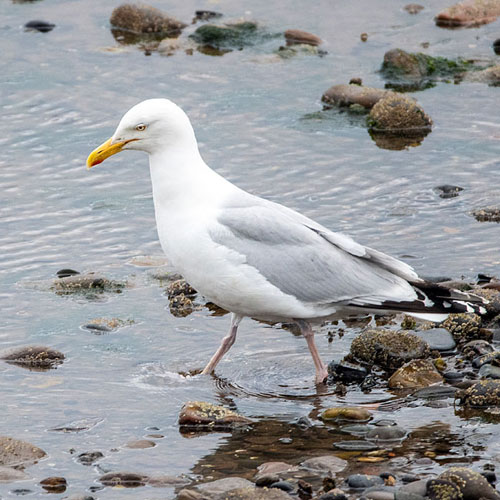 |
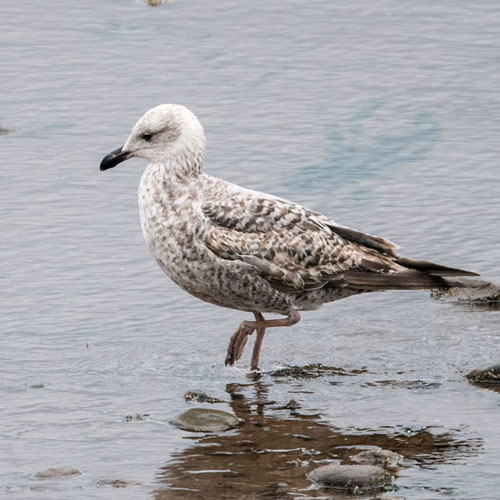 |
Another under-appreciated bird much in evidence was the Mallard. They were very active,
splashing about, quarrelling and flying in and out. One of the photographs below shows a drake in
eclipse plumage. The other “usual suspects” I saw were Oystercatchers and Carrion Crows, all
taking advantage of the recently exposed sands and pools after the tidal waters had receded.
| Female Mallard |
Mallard in Eclipse plumage |
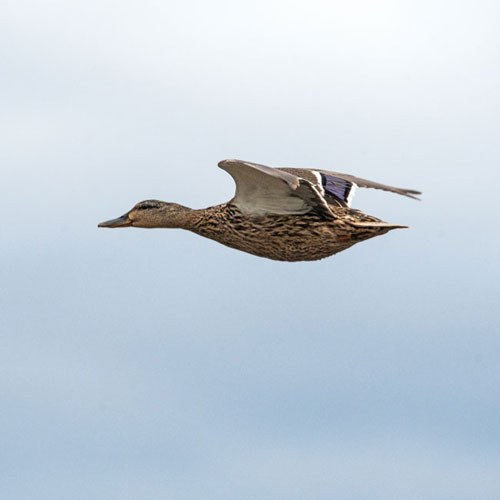 |
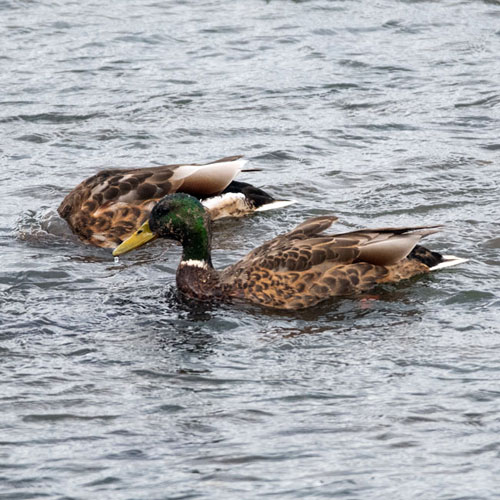 |
| Oystercatcher |
Carrion Crow |
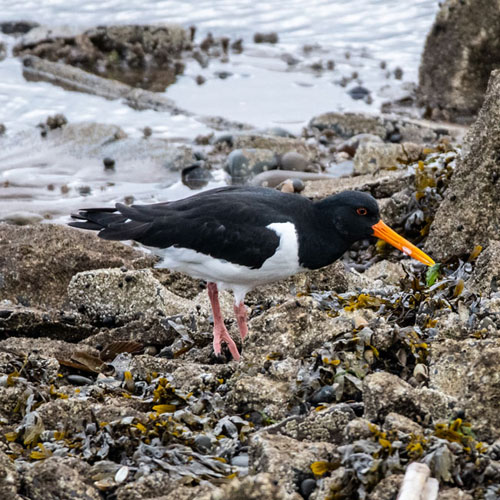 |
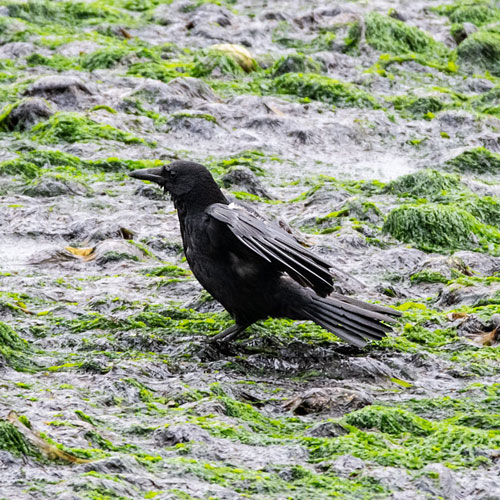 |
Wildflowers I encountered along the path made up for the rather empty seascape. Dandelions
were numerous and some of them were attracting insects, like the one below, hosting the Sawfly,
Tenthredo arcuata .Most prominent were “bushes” of Tall Melilot. I also came across two
types of Poppy, the Red and the Opium.
| Sawfly - Tenthredo arcuata |
Tall Melilot |
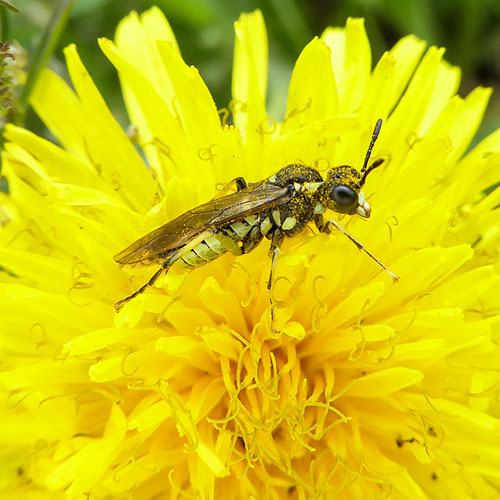 |
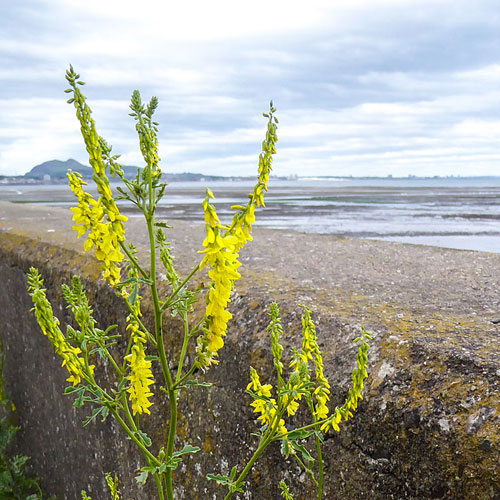 |
| Red Poppy |
Opium Poppy |
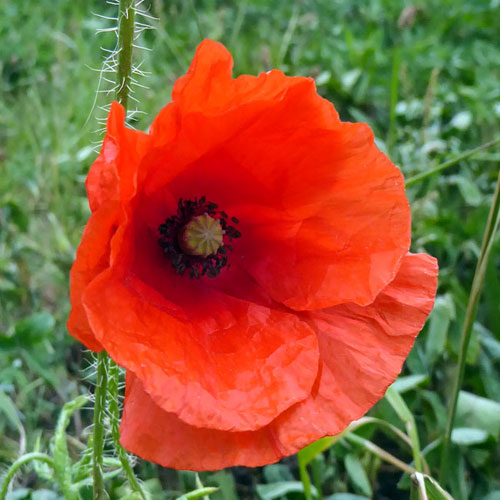 |
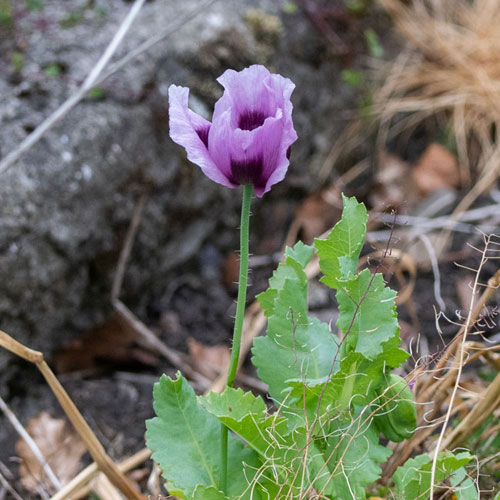 |
As I neared the side path that would take me to the Scrapes, a Skylark suddenly ascended from
the tall grass, providing me with an excellent opportunity for a flight shot. From the side path I
could hear a Reed Bunting calling, and I soon spotted it singing atop a fence post. As I entered
the reserve, the footpath to the first hide yielded some nice shots of Hedgerow Cranesbill,
followed by a shot of a resting Speckled Wood butterfly.
| Skylark |
Reed Bunting |
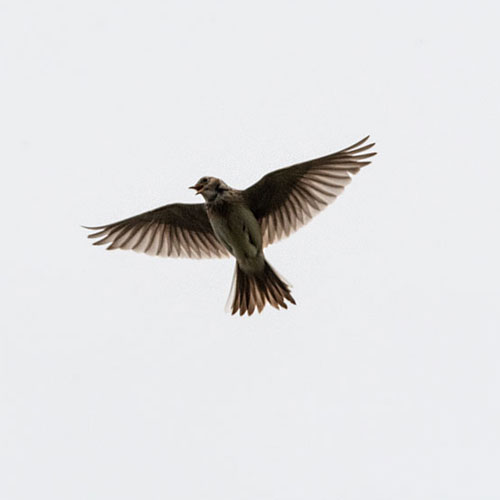 |
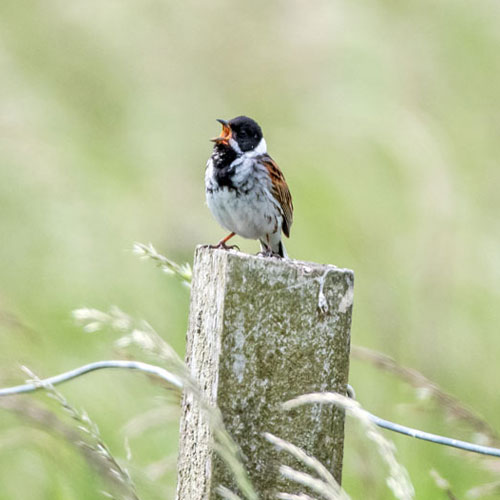 |
| Hedgerow Cranesbill |
Speckled Wood Butterfly |
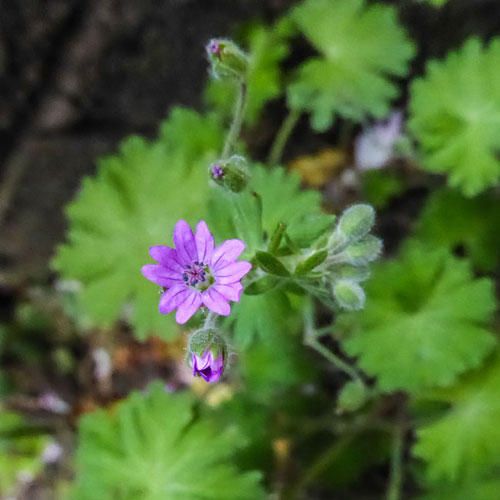 |
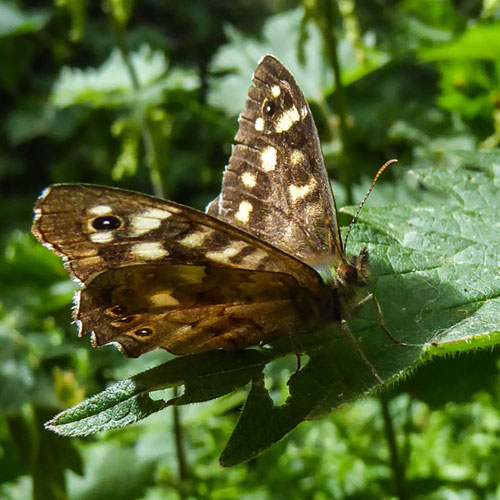 |
From the middle hide I could see that the reserve was fairly empty, as I had expected given that
the tide was low. However, I did see a pair of Magpies lazing about right next to the hide. I also
saw a pair of juvenile Grey Herons far to the left and a pair of Shelducks that were pretty mobile
enabling me to get a relatively close shot on one of their brief stops in front of the hide. I also
managed passable pictures of some of the many Sand Martins that were skimming the
water for emerging insects. My final sighting was of a tiny Black Garden Ant that traversed
the hide wall where I was sitting.
| Magpie |
Juvenile Grey Heron |
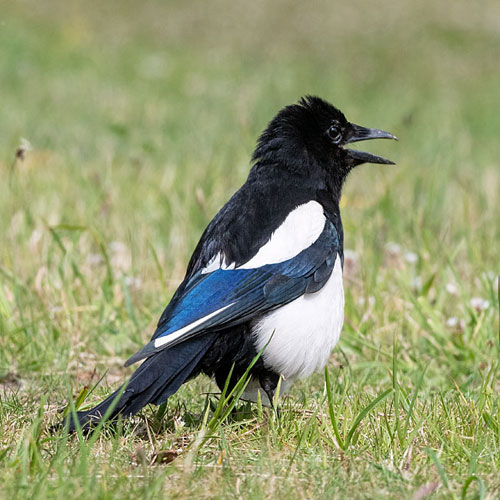 |
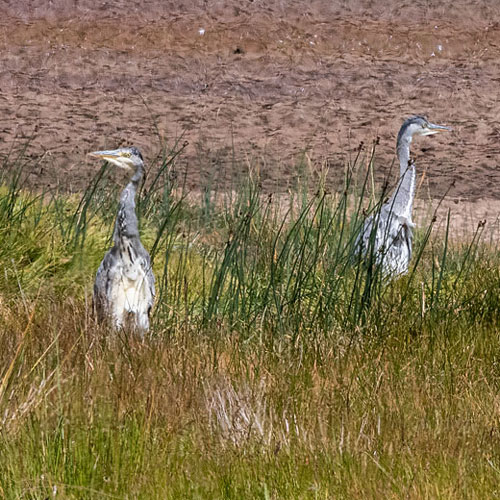 |
| Greylag Goose |
Shelduck |
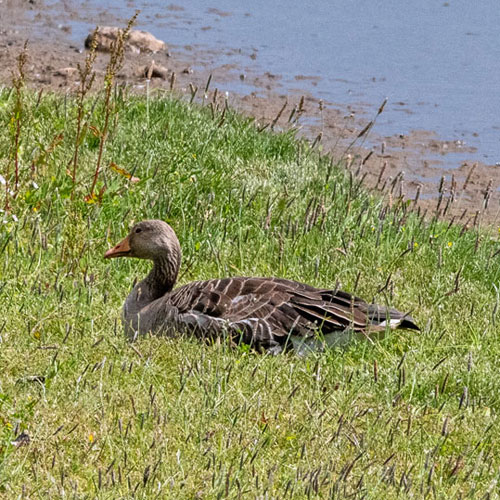 |
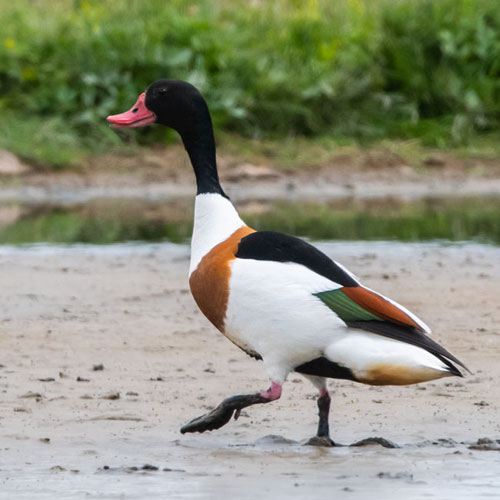 |
| Sand Martin |
Black Garden Ant |
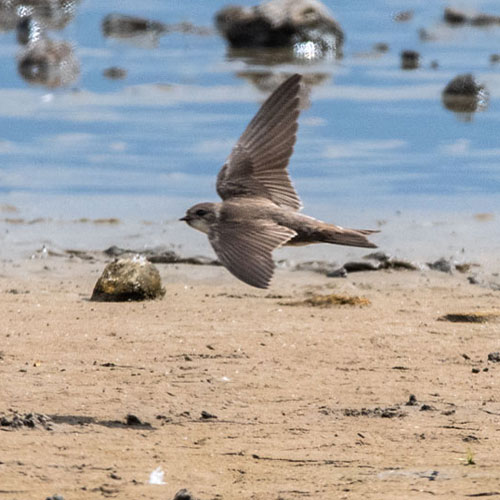 |
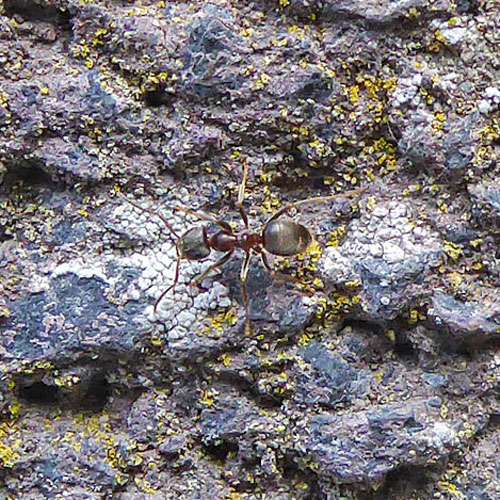 |
I decided to walk back to the car (parked near the Cadet hall) to investigate the river
fauna and flora. As I walked back by the sea wall I got a distant view of a diving Cormorant and also a
fairly pleasing capture of a male Linnet that was feeding at one of the seating areas by the
“promenade”. At the final bend, as I reached the river, I once again heard a Reed Bunting, and
very soon found it sitting on a vandalised sign. Nearby I snapped a Red-tailed Bumblebee on Tall
Melilot.
| Cormorant |
Linnet |
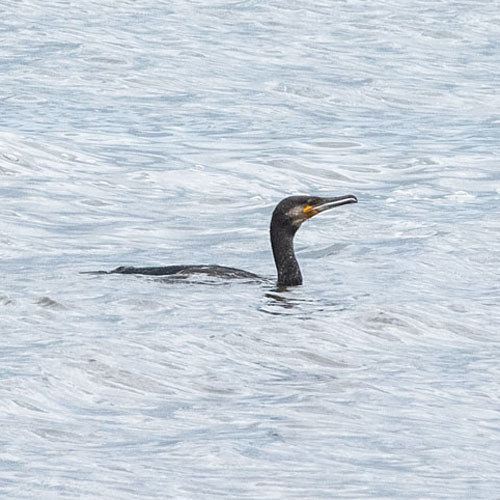 |
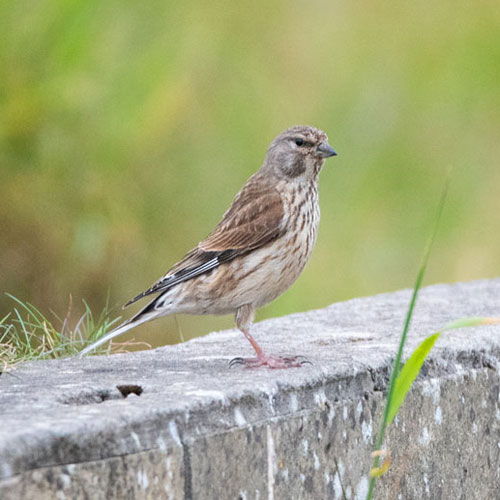 |
| Reed Bunting |
Red - tailed Bumblebee |
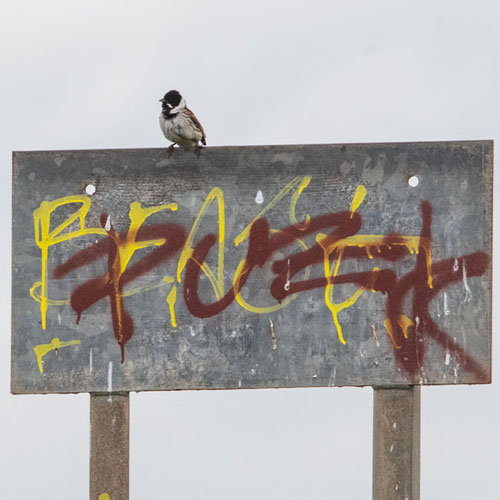 |
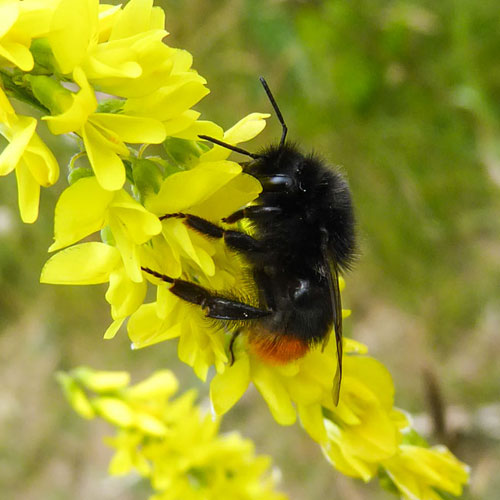 |
My stroll up the River Esk began well with pictures of Eider females with their little fluffy ducklings.
This was followed with a picture of a very young House Sparrow waiting on a branch overhanging
the river. It sat waiting for its adult to return with food. Just past the “Electric Bridge” there were
Jackdaws on the grass verge and Carrion Crows on the river shallows. I also photographed a
Canada Goose that was on the island beside the footbridge.
I continued up the river, under the New Bridge (which isn’t very) and was delighted to see a Grey
Wagtail catching flies over the areas of exposed pebbles. I very quickly realised that it was
catching them for its youngster that was sitting still and fairly camouflaged on the pebbles. It
wasn’t long before a male Pied Wagtail turned up also hunting flies. I sat a while watching the
wagtails before spotting a large Herring Gull with a beakful of what looked like moss. Maybe the
moss surrounded a dead animal, as I’m not aware that Gulls eat plants.
| Grey Wagtail |
Juvenile Grey Wagtail |
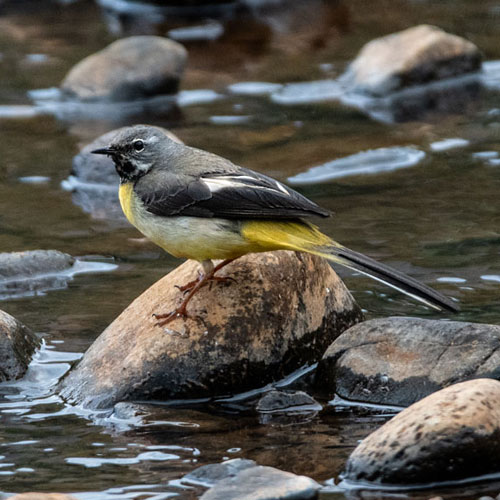 |
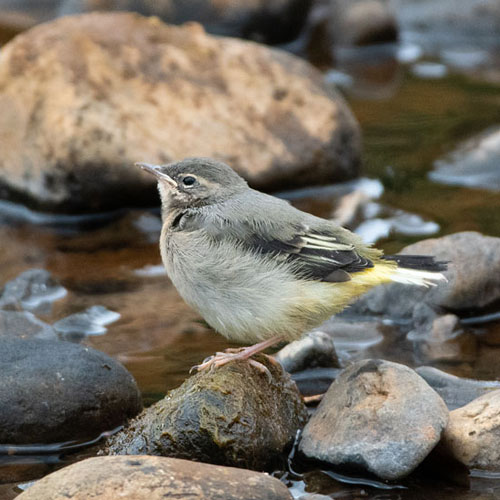 |
| Pied Wagtail |
Herring Gull |
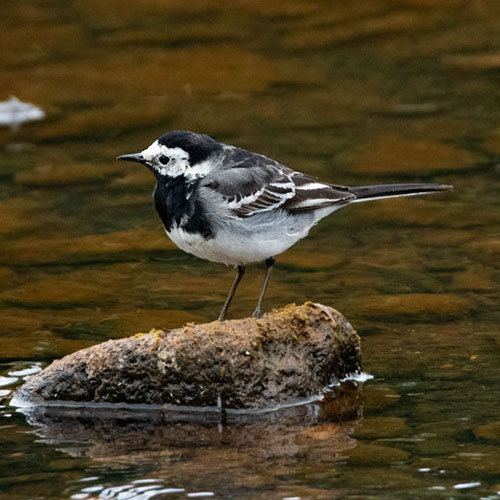 |
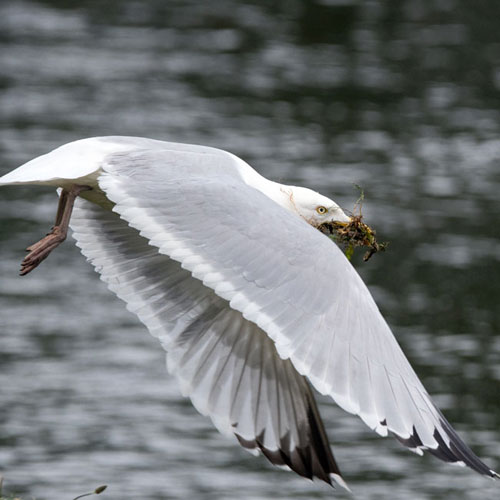 |
On my walk back to the car I managed some snaps of Swallows whizzing low over the river. I also
watched a rather vicious scrap between two big Herring Gulls. I noticed that there were some
attractive wildflowers on the fortified river edges, including the yellow Biting Stonecrop and the
white English Stonecrop. My final shot was of a bloom of Large Bindweed.
I had a quick look for the King Eider at the mouth of the Esk but to no avail. If anything, the tide
looked further out. Never mind, I am satisfied with what sightings I did get. Most pleasing were
the Wagtails and the Eider ducklings. I celebrated with strong tea and some fancy Parisian
chocolates, a Father’s Day gift from my daughter. Hopefully John will be able to join me next week
but I doubt if the chocolates will survive until then, but Scottish strawberry tarts will definitely give
the French a run for their money.
Week ending: 12th June 2022: Barns Ness
With frequent heavy showers piling in from the west we headed to the east coast, to Barns Ness
just beyond Dunbar. We stopped in at Dalkeith Morrisons for a quick breakfast (9.9/10: excellent)
before driving down the A1 to begin our weekly nature-watching quest. The weather was dry and
windy but there were frequent sunny spells so we looked forward to our circuit of one of our
favourite sites.
The tide was reaching its maximum height as we arrived and we spotted a gathering of
squabbling female Eider near the shore with their ducklings.
They were feeding from seaweed piles, as were a pair of drake Mallards and the odd passing
Herring Gull. We also saw a solitary drake Eider standing on an exposed rock at the other end of
the small bay.
Near the drake Eider were a pair of foraging Shelducks and beyond them a group of
Cormorants had gathered on the rocks at the edge of the wave-beaten shore. As we continued
along the edges of the shore towards the lighthouse we came upon a couple of butterflies, a
Green-veined White and a Small Heath, each cowering low on the grass, sheltering from the gusty
wind.
| Shelduck |
Cormorant |
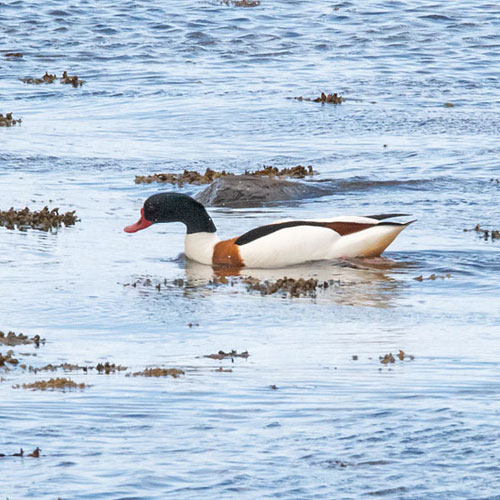 |
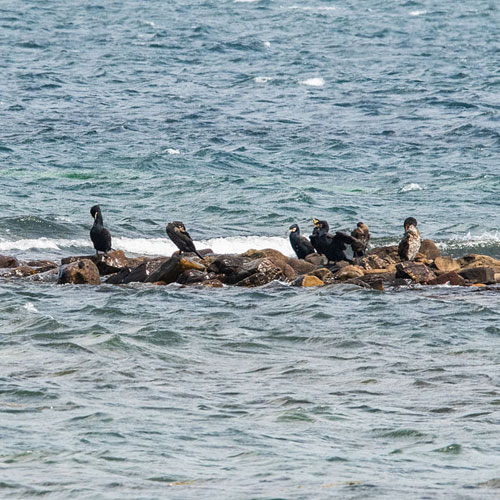 |
| Green - veined White Butterfly |
Small Heath Butterfly |
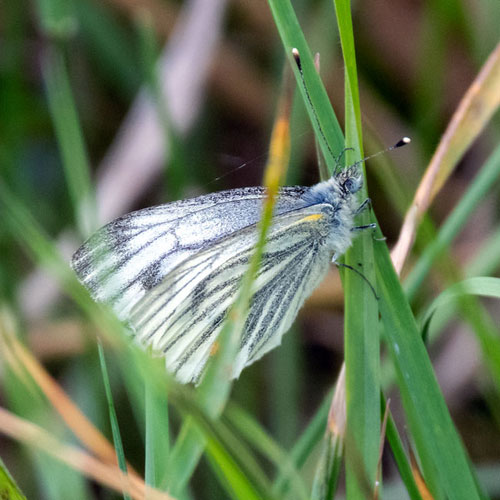 |
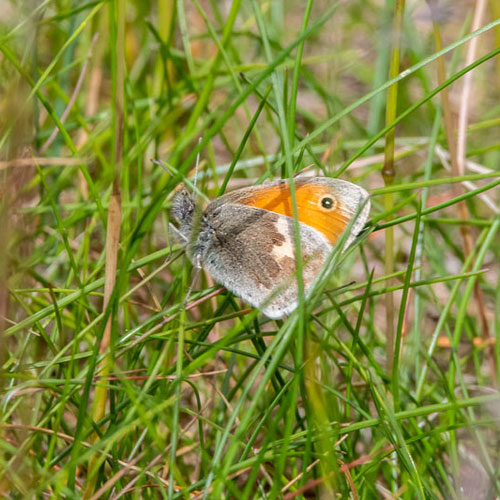 |
We passed a small Herb Robert plant with its pretty pink flower and also a rather larger and
equally beautiful Tree Mallow. As we rounded the lighthouse several Gannets passed low
over the water. There were also Oystercatchers flying in the opposite direction.
| Herb Robert |
Tree Mallow |
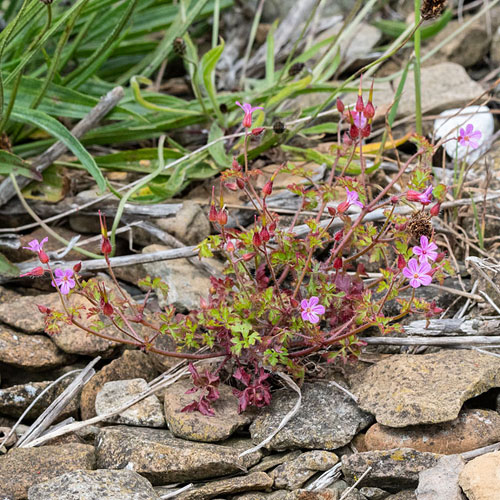 |
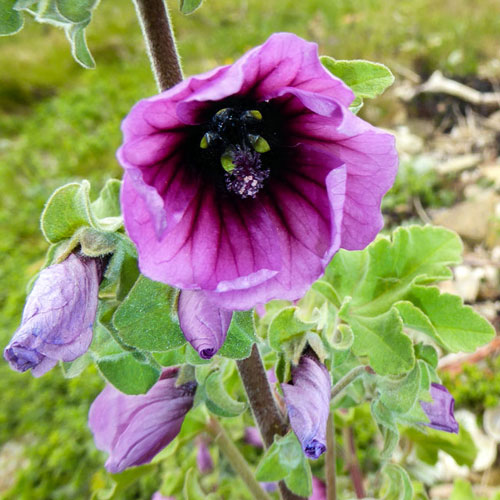 |
| Gannet |
Oystercatcher |
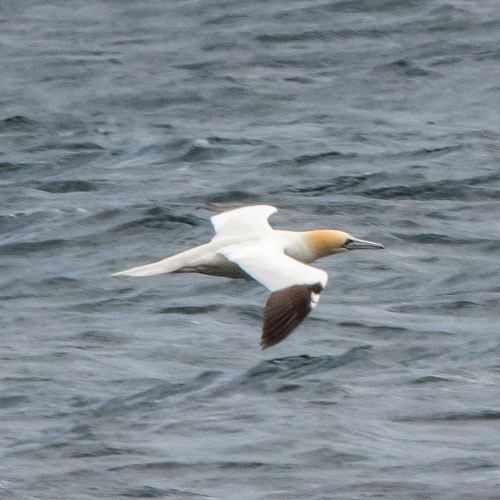 |
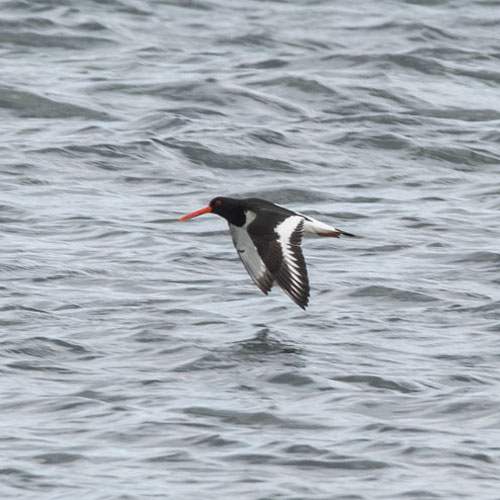 |
I photographed a wind-buffeted Dog Rose and some Lady’s Bedstraw that was growing around a
small ruin on the far side of the lighthouse. John spotted a Goldfinch on the rocky shore. I
managed a flight shot as it reacted to an approaching flock of young Starlings that were very
active on the huge piles of seaweed that lined the sandy beach.
| Dog Rose |
Lady's Bedstraw |
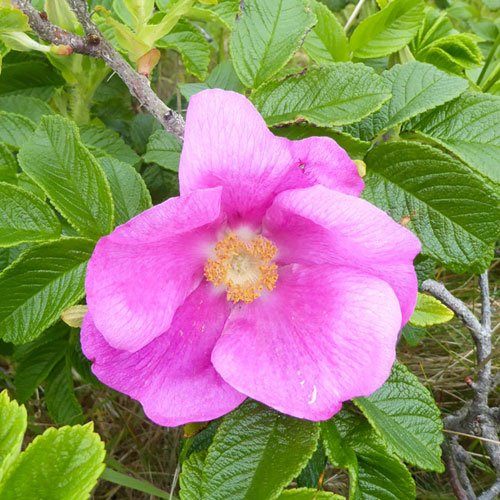 |
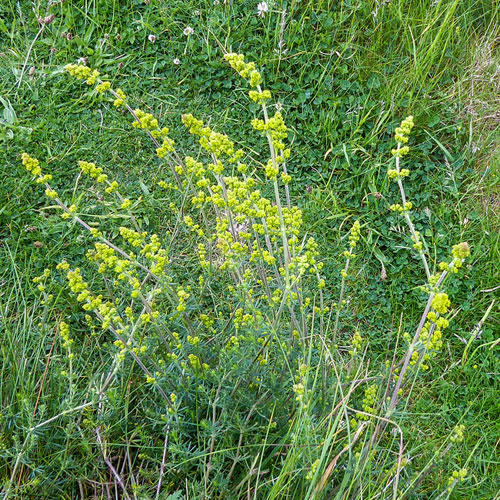 |
| Goldfinch |
Juvenile Starling |
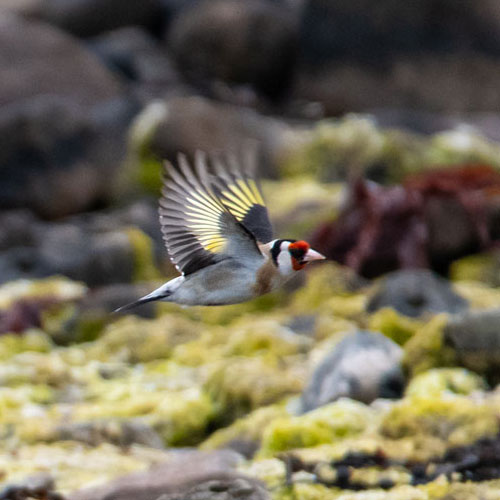 |
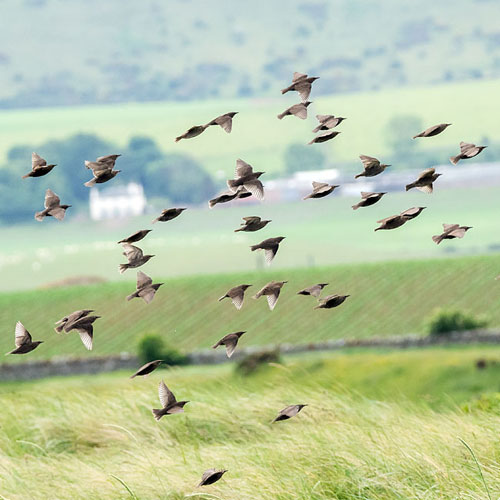 |
The Starlings were very flighty, which provided me with the opportunity to photograph them as
they passed over the dunes.
We moved along the path beyond the lighthouse and caught sight of a Meadow Pipit
posing atop a small bush. We also saw a Skylark that had descended onto a fence post
after it had been singing furiously high above us. We found a path through the dunes that allowed
us to peek onto the shore. We heard, then saw a Reed Bunting that had presumably been
picking invertebrates from the decaying seaweed. We continued along the path to find another
path that lead onto the beach. There we found a pair of Shelducks picking at the seaweed near
the shore. Looking further along the beach we could see a large flock of gulls feeding on the
seaweed. We were excited to see a small group of Ringed Plovers speeding over the
waves.
| Meadow Pipit |
Skylark |
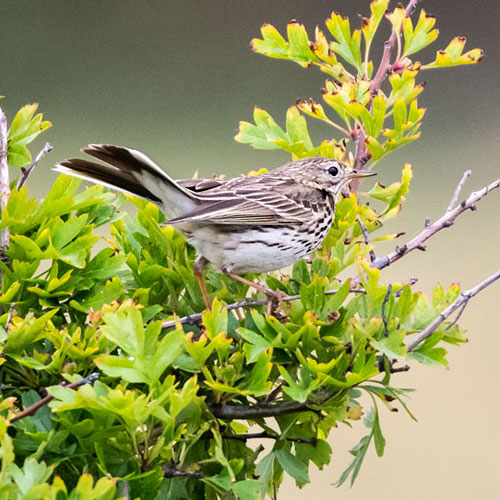 |
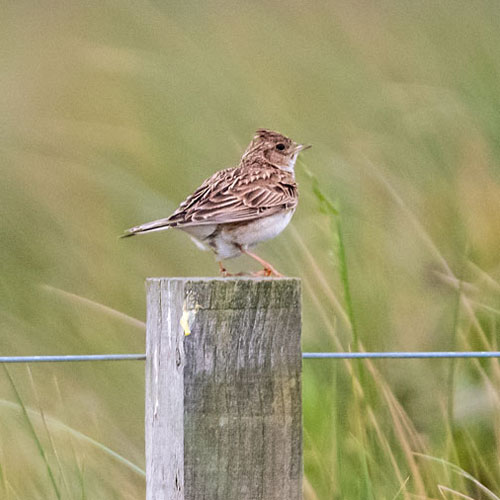 |
| Reed Bunting |
Shelduck |
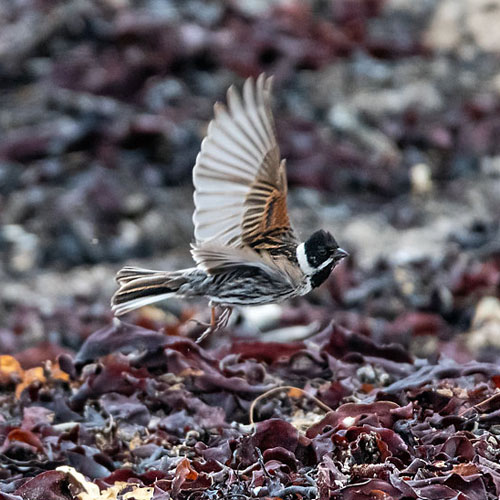 |
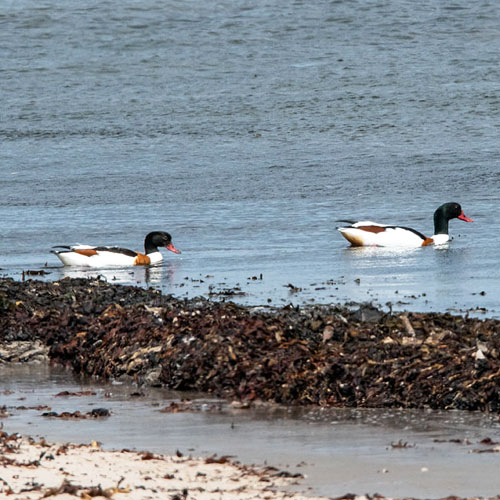 |
| Various Gulls |
Ringed Plover |
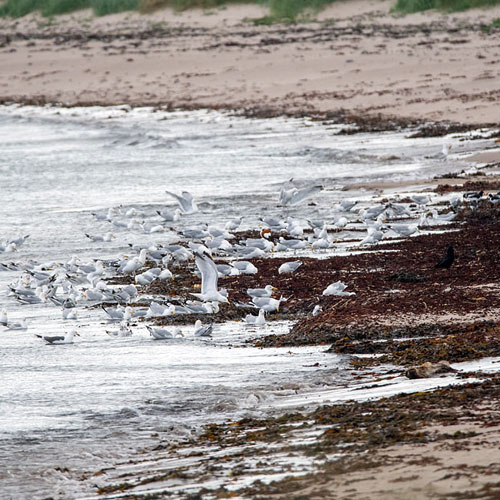 |
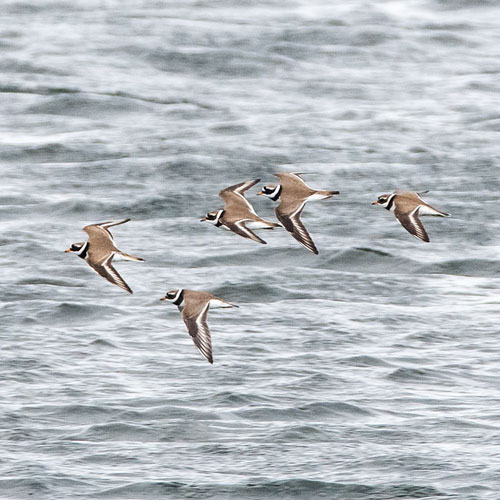 |
After some to-ing and fro-ing the Ringed Plovers eventually decided where on the shore they were
going to land in order to get their share of juicy invertebrates.
We next left the beach and passed through a kissing gate to cross a field that lead to a style into
the eastern boundary of the reserve. We paused before the style as I heard a nearby call of a
Yellowhammer . It eventually appeared on a fence post 8m from where we were standing.
Just after I photographed it, a Skylark dropped down into the grass 10m away. I quickly
photographed it without disturbing it. We then went to the style but before I mounted it
another Skylark was dropping slowly from its high-level stint of singing. I managed a reasonable
shot before it disappeared into the vegetation. Next we moved to the boundary wall where I snapped
a trio of wildflowers, Bugloss, Hop Trefoil and Common Mallow.
| Yellowhammer |
Skylark... |
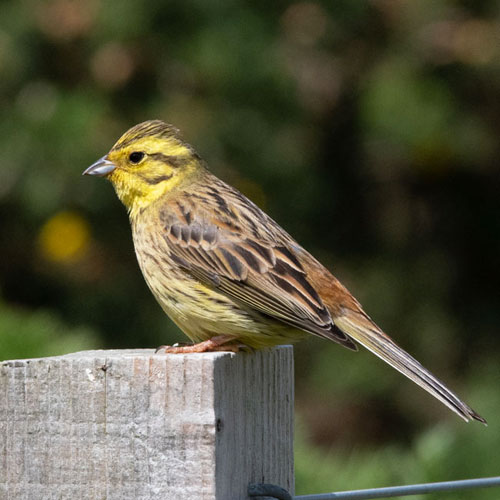 |
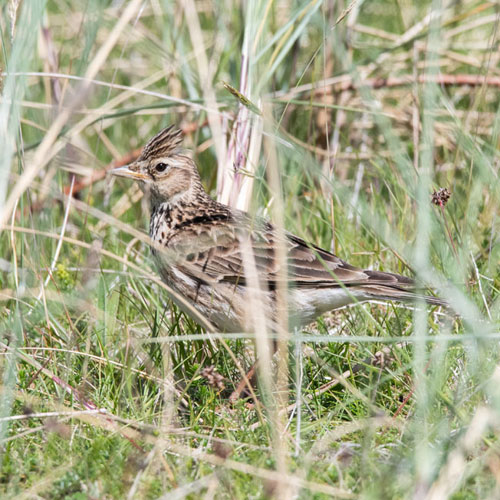 |
|
Bugloss |
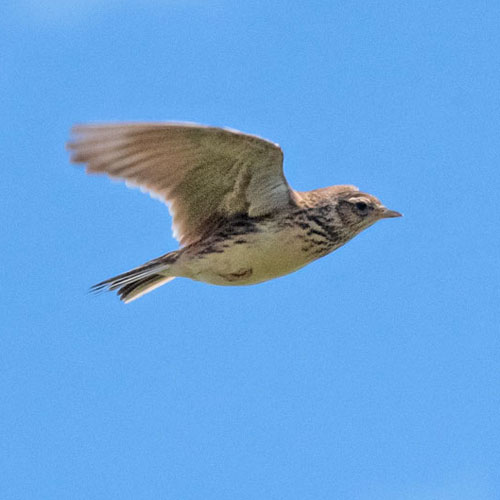 |
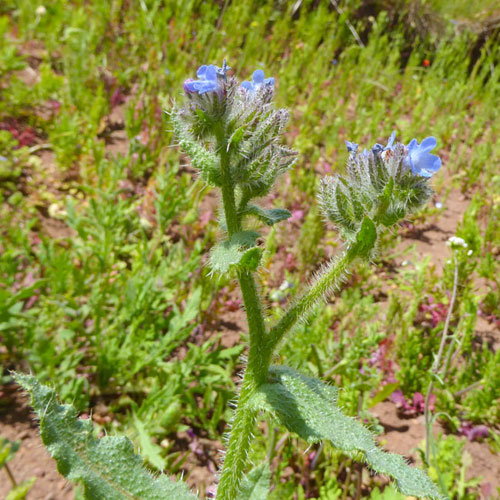 |
| Hop - Trefoil |
Common Mallow |
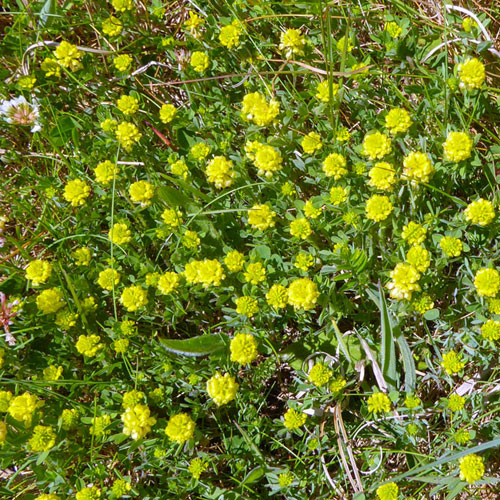 |
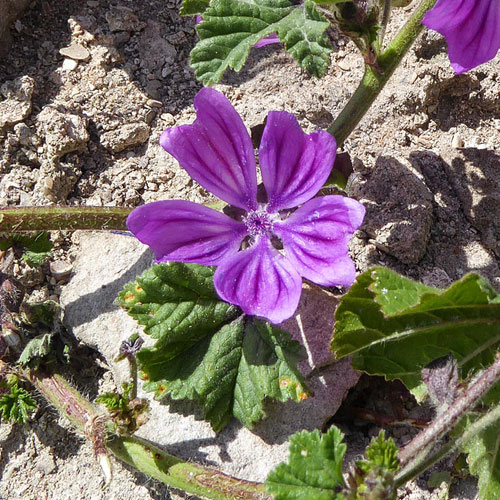 |
Whilst scanning the devastation to the natural environment caused by the quarrying, I spotted a
Brown Hare bounding away from us. I took a picture of a flowering Weld plant then as John
and I were sitting on our stools catching our breaths, John signalled silently to look behind him
where a male Chaffinch was walking along the path catching flies. It was less than 2m away. We
continued our circuit along a rough path that led us to the site of the old caravan park. There I
snapped a male Linnet that was high in a tree. A bit lower down was a shabby Goldfinch and I
also captured an image of a female Chaffinch on the opposite side of the tree.
| Brown Hare |
Weld |
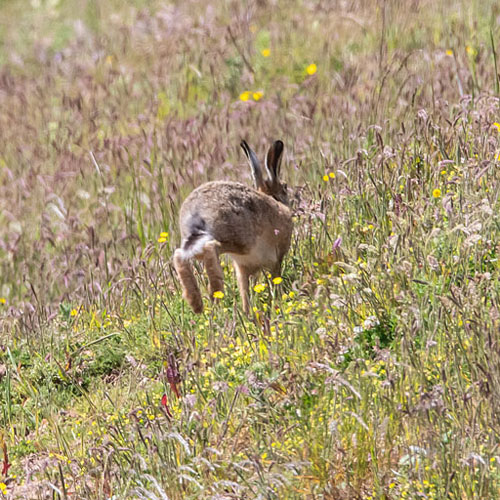 |
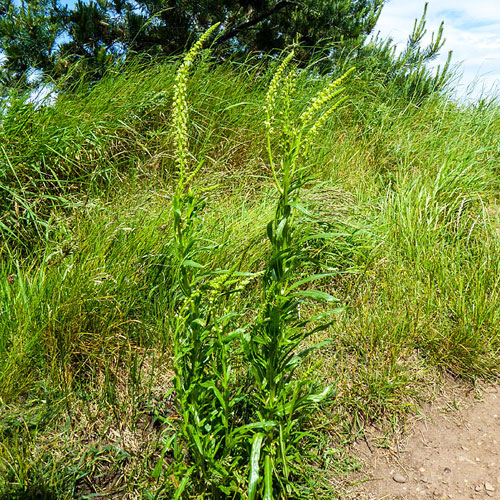 |
| Male Chaffinch |
Linnet |
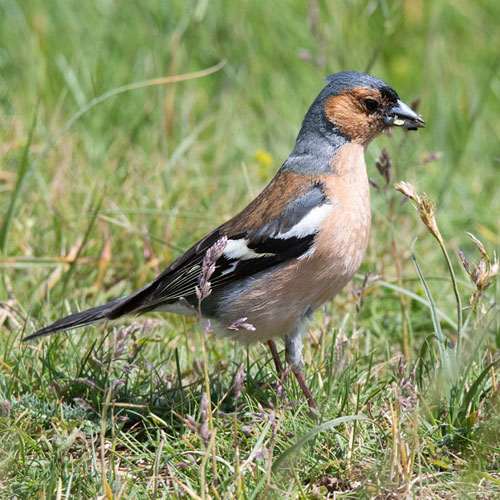 |
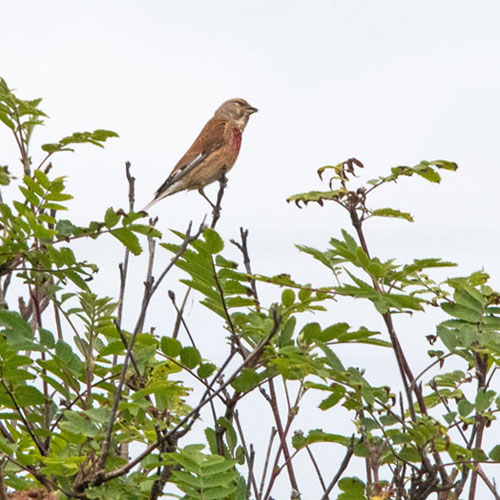 |
| Goldfinch |
Female Chaffinch |
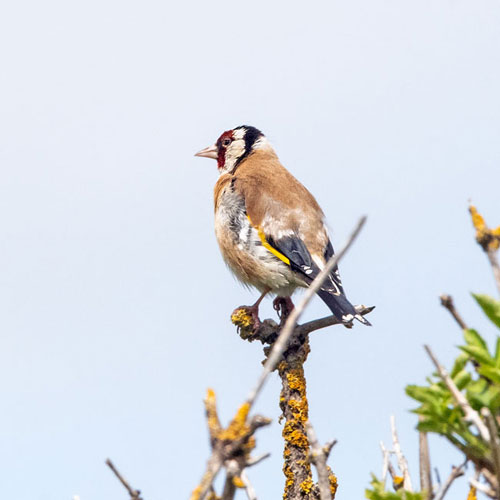 |
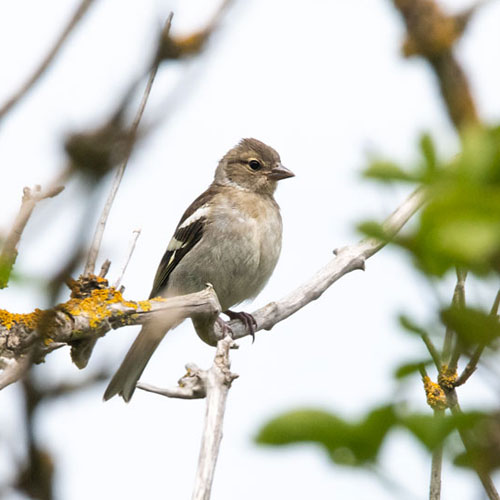 |
We finished the day with a late flurry of interesting flower shots. Gorgeous Viper’s Bugloss
flowers were just coming into bloom. There were Buff-tailed and White-tailed Bumblebees
teeming around them as they probed the flowers for their pollen and nectar. At the edge of the
caravan park there were Blue Fleabane and Field Madder (the latter being a newbie for us)
and in a field adjacent to the exit road I found a pretty Fox and Cubs and also a Northern Marsh
Orchid.
| Buff - tailed Bumblebee |
White - tailed Bumblebee |
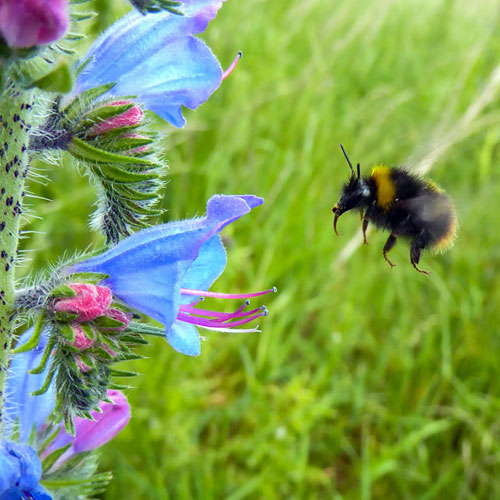 |
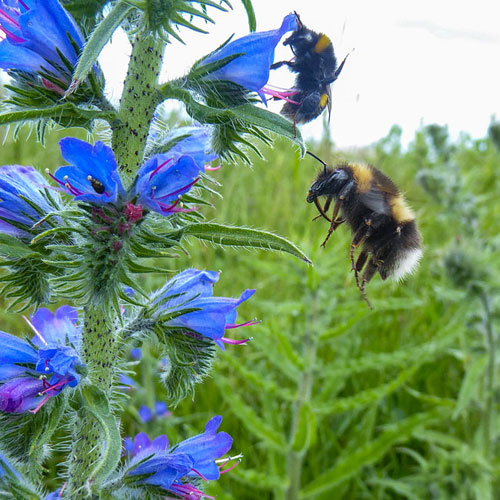 |
| Blue Fleabane |
Field Madder |
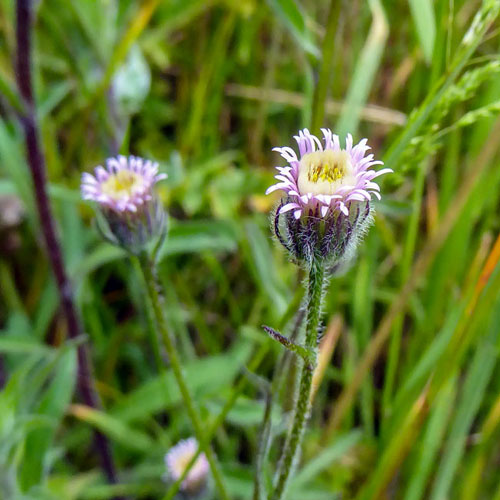 |
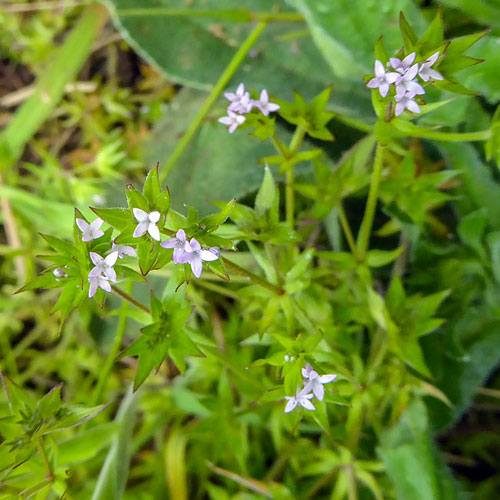 |
| Fox and Cubs |
Northern Marsh Orchid |
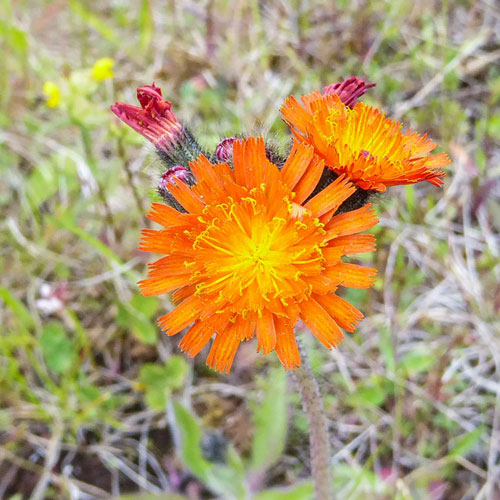 |
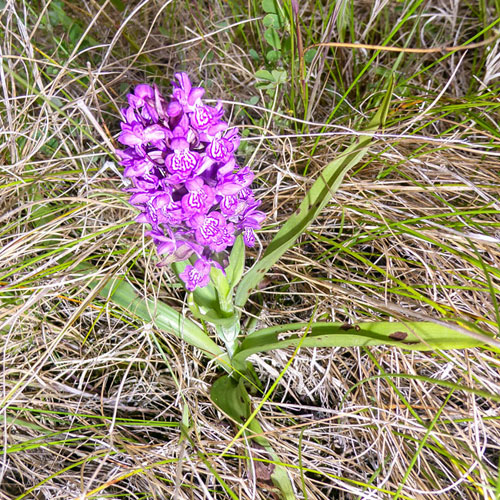 |
We were very pleased and satisfied with our circuit of Barns Ness. Highlights were the
Yellowhammer, Skylark and Chaffinch shots and of course the Field Madder. We actually had our
tea at Belhaven Bay at the other side of Dunbar. We did a brief walk to the Seafield Pond where
we saw plenty in our short time there, the highlight of which was a close view of a male Reed
Bunting on rushes. Our tea and strawberry tarts went down with the usual satisfaction fortified by
the thought of all of our wonderful sightings. Hopefully we can replicate that feeling next week.
Week
ending: 5th June 2022: Ardmore
Point
This week we found ourselves at Ardmore
Point on the Clyde Estuary between Dumbarton and
Helensburgh. My WeatherPro app predicted bright, warm and calm weather
for the west, while the east was to be colder and cloudier. The low
tide during our trip would be unfortunate since the bays’
population of birds seems to vanish with the water, however in such
circumstances we are pleased to concentrate a little more on flora and
insects.
Our visit to Dumbarton Morrisons was blighted by slow service, mixed-up
orders, small plates and dry sausage, but it was otherwise ok (7/10,
(generous)). On alighting from the car we could see several Grey Herons
spread out on the exposed sands, silhouetted by the Sun. As we walked
along the first section of the footpath we could hear the unmistakable
rasping call of a Greenfinch .
We tracked the source to a particular tree but I could see only a
Dunnock in its branches until the Greenfinch flew into a neighbouring
tree and started belting out its call. A little further on we were
delighted to see our first butterfly, a Large
White .
| Grey Heron |
Dunnock |
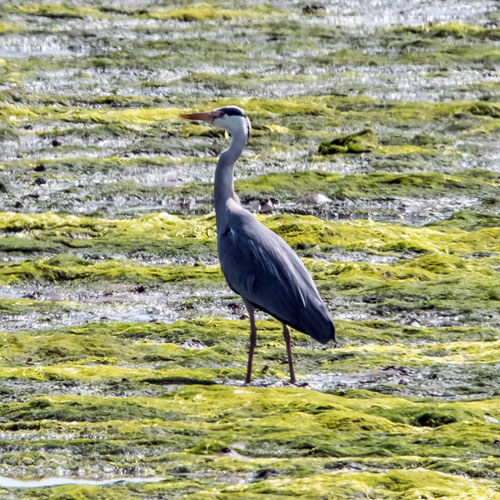 |
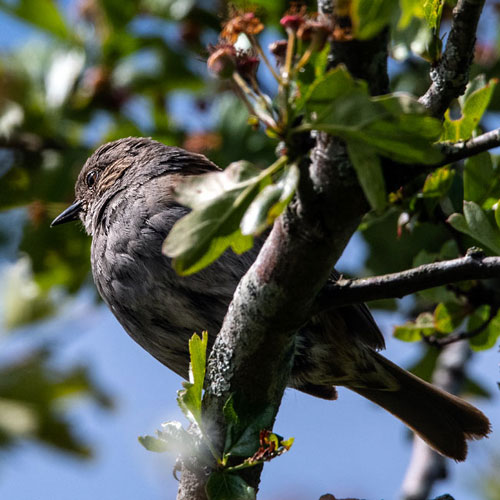 |
| Greenfinch |
Large White
Butterfly |
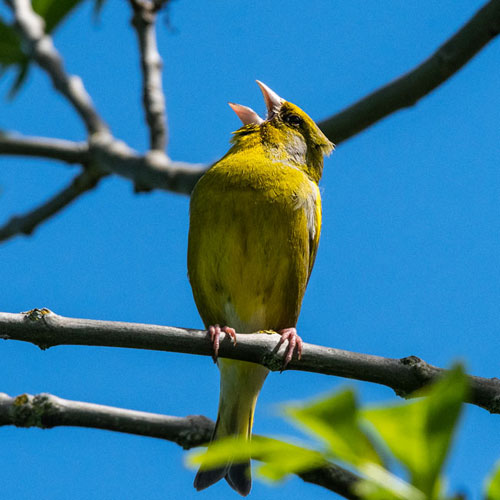 |
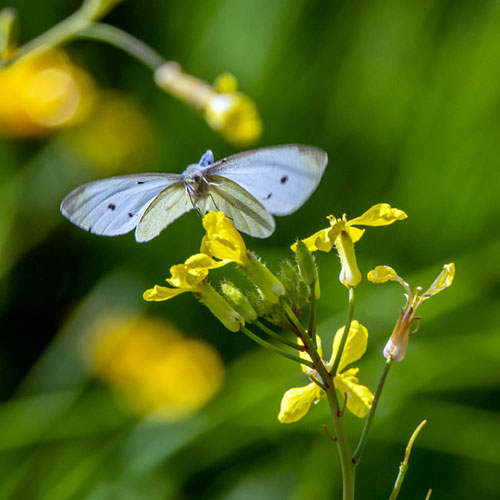 |
Soon after that we encountered our first bee, a Red-tailed
Bumblebee grappling with a Sea Radish flower. As I pursued
the butterflies I noticed the rocket-shaped seed pods of Sweet Cicely.
I also snapped a couple of shots of one of the many freshly-bloomed
White Clover.
| Red - tailed
Bumblebee |
Sea Radish |
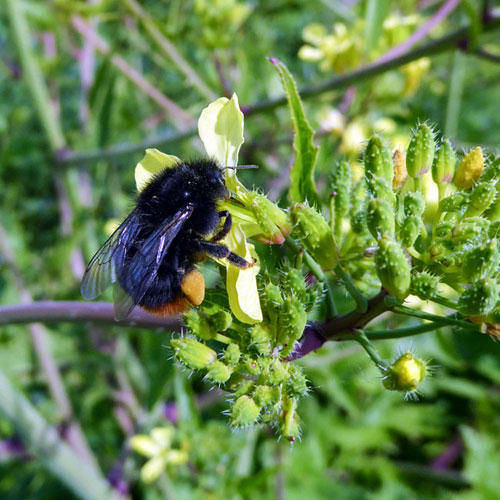 |
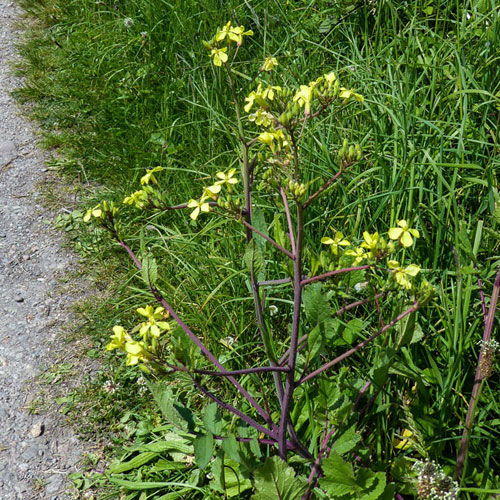 |
| Sweet Cicely |
White Clover |
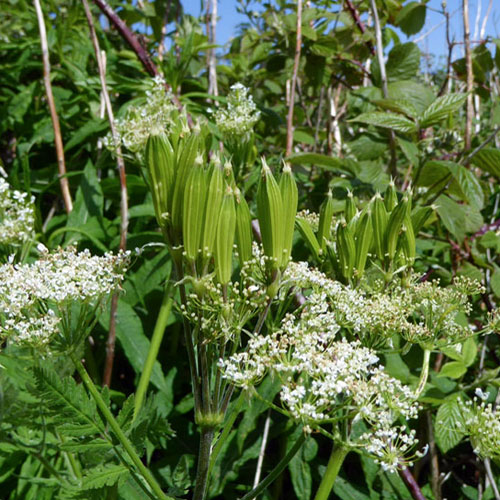 |
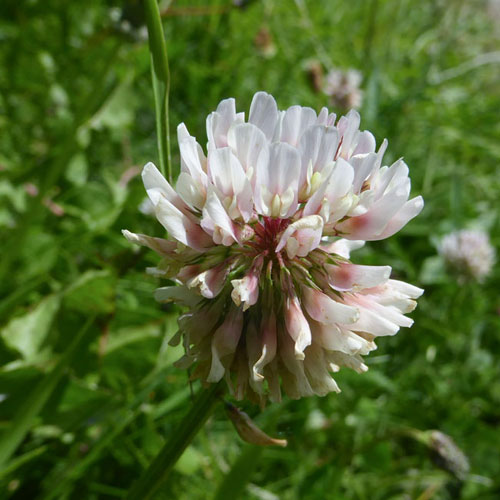 |
About a third of the way around the peninsula, where the path crosses a
burn, we heard the tones of a male Whitethroat. We quickly located it
in the high branches of an Ash tree. Lower in the tree I spied a Goldfinch
sitting on a shaded branch. There were Yellow Flag Irises flowering
along the burn and large patches of Green Alkanet all along the section
of the footpath.
| Whitethroat |
Goldfinch |
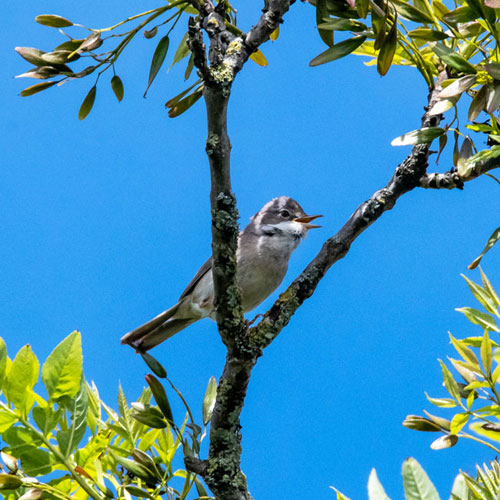 |
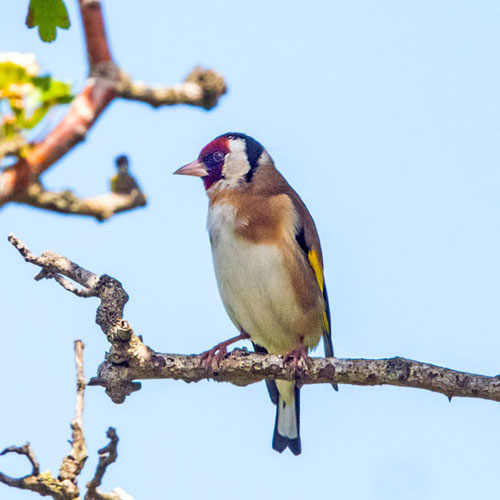 |
| Yellow Flag Iris |
Green Alkanet |
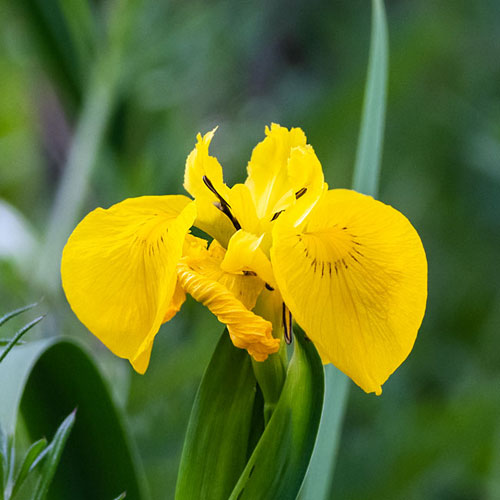 |
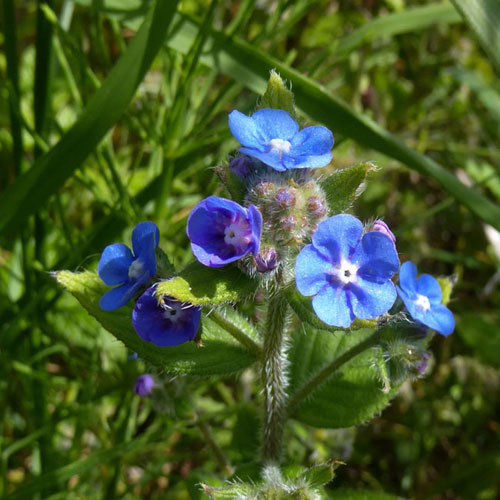 |
We paused briefly at roughly the midway point and were rewarded with a
quite distant view of a small flock of Eider ducks. Unfortunately the
clouds were covering the Sun at the time. We were treated to some
flypasts by a flock of Curlew that were relocating from the South Bay
to the North Bay. Flying in the opposite direction, a trio of Red-breasted
Mergansers dashed low just above the waves. Soon
after that we watched a pair of Shelducks heading south.
| Eider |
Curlew |
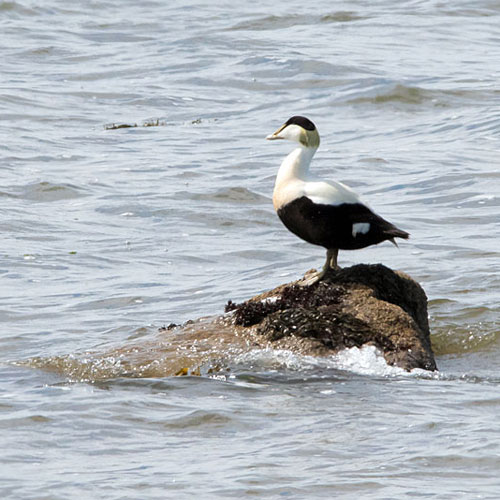 |
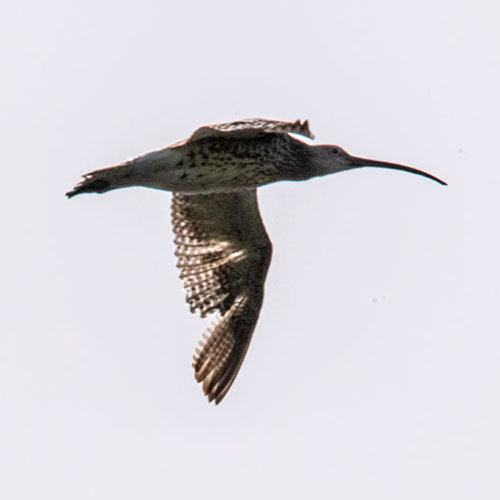 |
| Red - breasted
Merganser |
Shelduck |
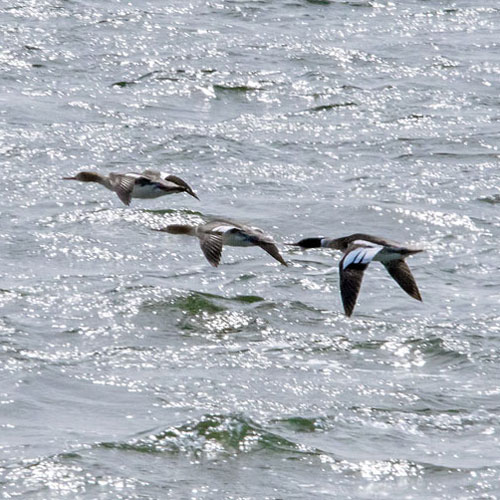 |
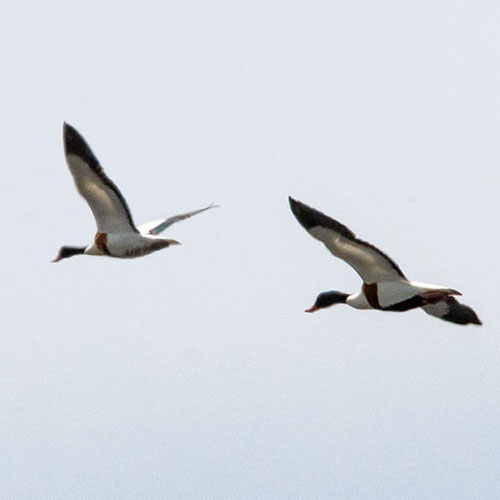 |
Just before the Sun reappeared, a Herring Gull flew along the shore and
hovered a few times in order to drop something from its beak. Was it
being sick? We’re not sure. We continued our circuit and were
joined by a flighty Peacock butterfly which I did manage to snap on one
of its brief stops. I next got a delightful shot of a Common
Carder Bee hanging onto a Red Campion flower. I
also managed a distant shot of a well-lit male Linnet
perched on a very large boulder.
| Herring Gull |
Peacock Butterfly |
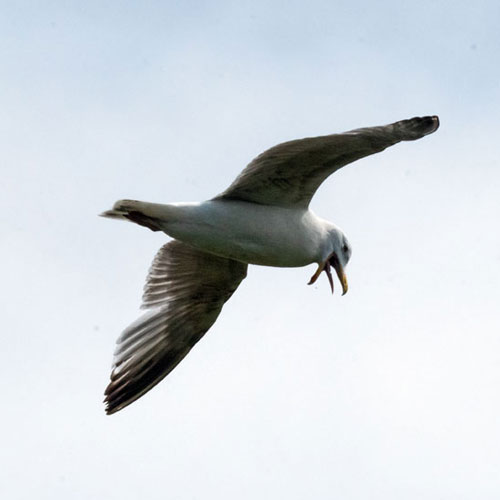 |
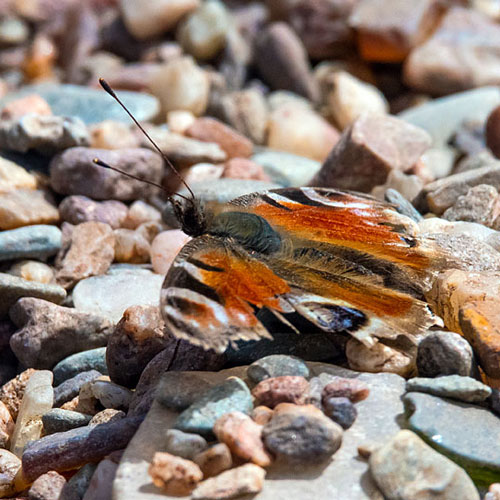 |
| Common Carder Bumblebee |
Linnet |
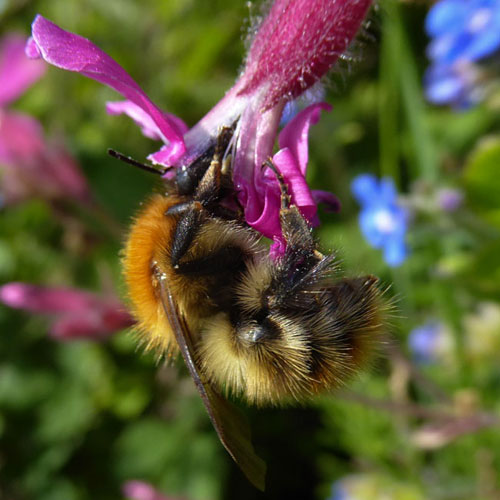 |
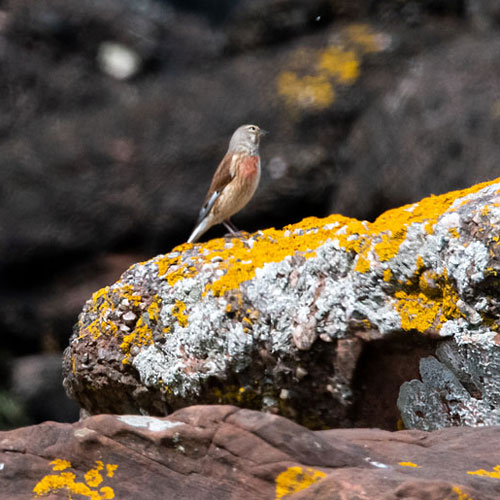 |
The Linnet turned out to be the last bird we would see until the very
end of the walk. Thankfully there were plenty more things to see. The
wildflowers, such as the Red Campion and Silverweed below, were
beautiful and they were doing their job of attracting insects. On
Hemlock Water Dropwort I found a Dance Fly, Empis opaca and also a Red
Mason Bee .
| Silverweed |
Red Campion |
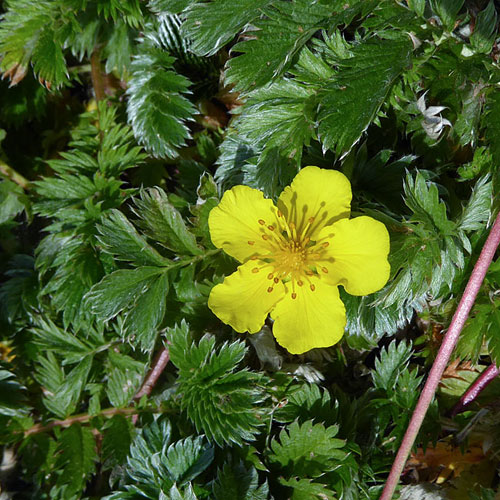 |
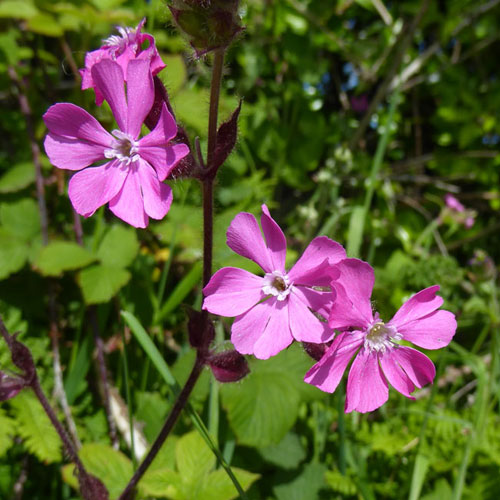 |
| Fly - Empis opaca |
Red Mason Bee |
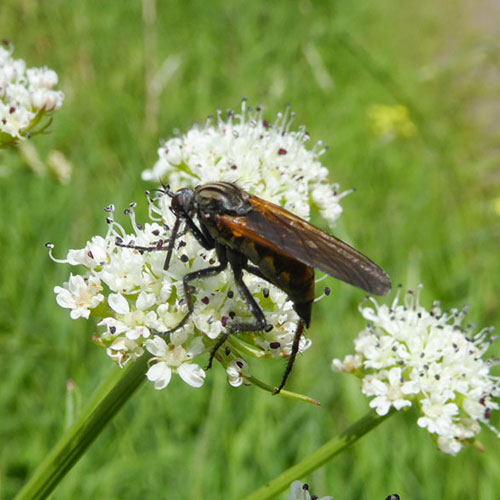 |
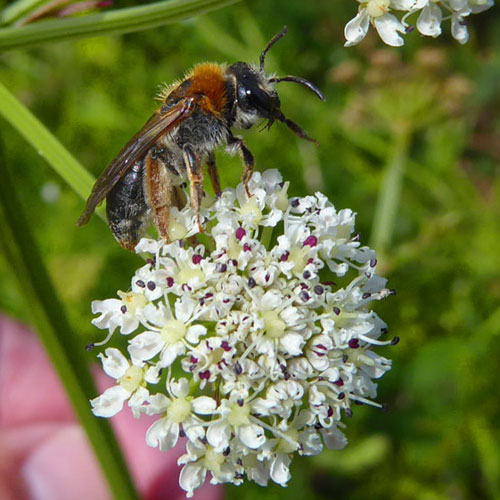 |
Tall and very pretty Foxgloves were blooming all along the newly
renovated path around the Point. John pointed out a White-tailed
Bumblebee that was dangling off of another umbilifer. We passed an area
where there were very large dome-shaped Rhododendron bushes standing
proud of the long grasses. We trekked along the edge of the North Bay
where I noticed an attractive Herb Robert flowering at the edge of
the path.
Also close to the path there were patches of Greater Stitchwort,
Germander Speedwell and Heath Bedstraw. I glimpsed a small, as yet
unidentified moth before it descended down into the undergrowth.
| Greater Stitchwort |
Germander Speedwell |
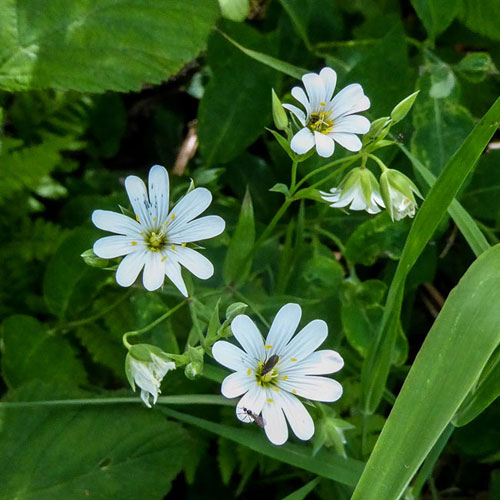 |
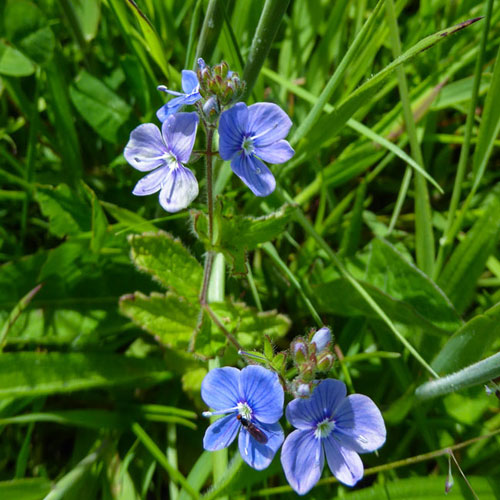 |
| Heath Bedstraw |
T.B.C. |
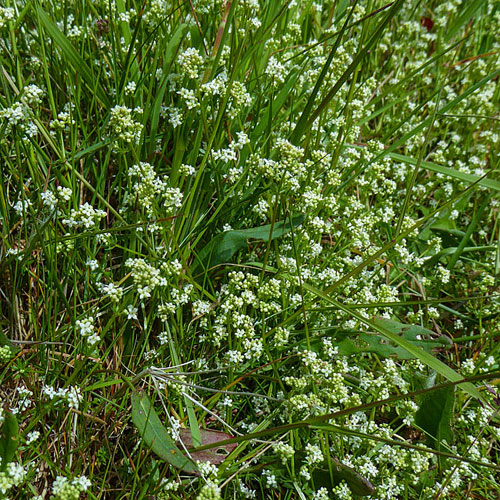 |
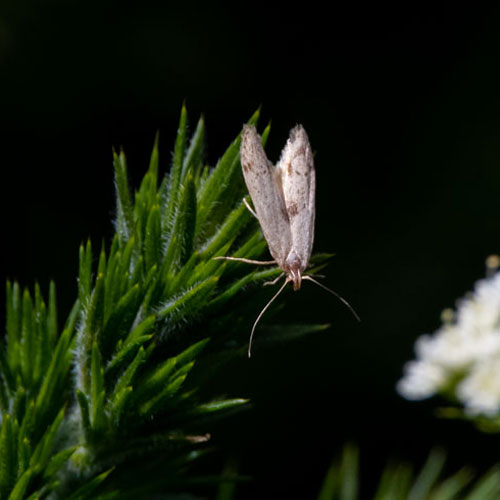 |
Throughout our walk we witnessed several times when male and female
Orange Tip butterflies met and fluttered around a bit before vanishing
in the breeze without copulating. I didn’t manage any decent
shots of these encounters but I did get shots of male Orange Tip on
Bluebell and one of a female Orange Tip resting on a Bramble leaf. We
ended our circuit with shots of a couple of birds. On the damp sands of
the North Bay there was a Carrion Crow probing what looked like a large
shell. My final shot was of an rather accommodating male Chaffinch that
was sitting on the fence, using it as a launch pad for catching flies,
presumably to feed its nestlings.
| Male Orange Tip Butterfly |
Female Orange Tip Butterfly |
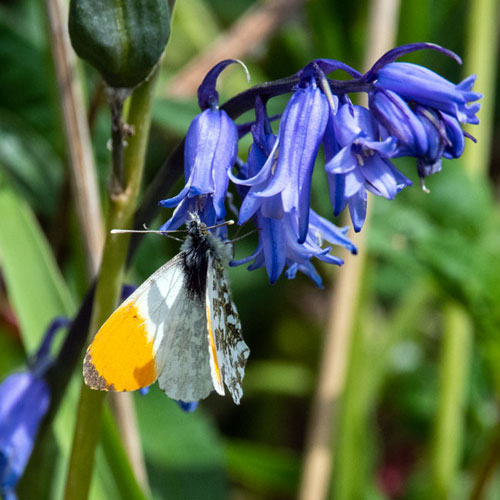 |
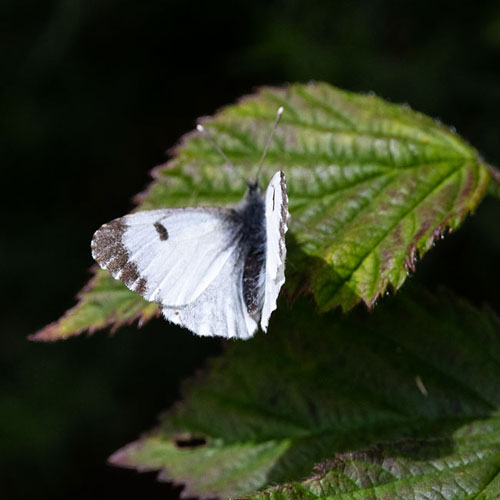 |
| Carrion Crow |
Chaffinch |
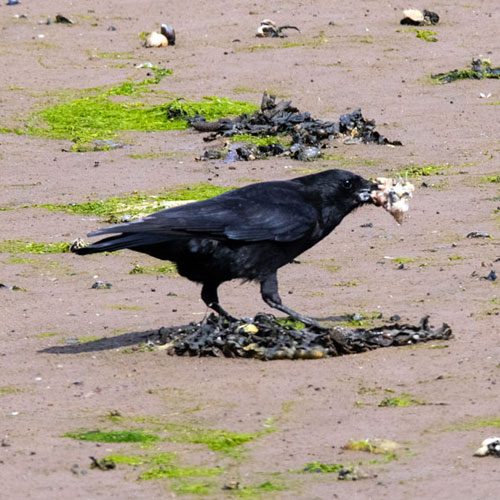 |
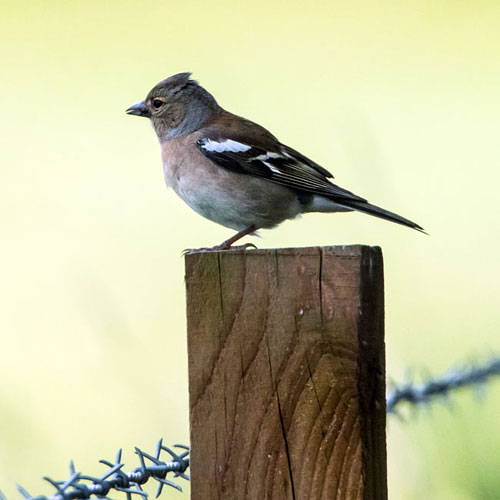 |
It had been a very
pleasant circular walk around a very beautiful part of the Clyde
Estuary. Once again the stars of show were not on the sea or shore, but
by the footpath. My favourites were the Greenfinch and Whitethroat and
also the Red Mason Bee. The warm conditions were a welcome change to the
often chilly and windy conditions we’ve experienced thus far
in 2022. Hopefully the weather in June will continue to be as pleasant.
Highlights - June 2022
We present this month’s gallery of my
favourite pictures I’ve taken during June 2022. They are
not listed in the order they have been taken, but according to a series
of themes. I’ve kept
commentary to a minimum, preferring to let each picture talk for itself.
GREAT CRESTED GREBES
BUTTERFLIES
| Green - veined White |
Meadow Brown |
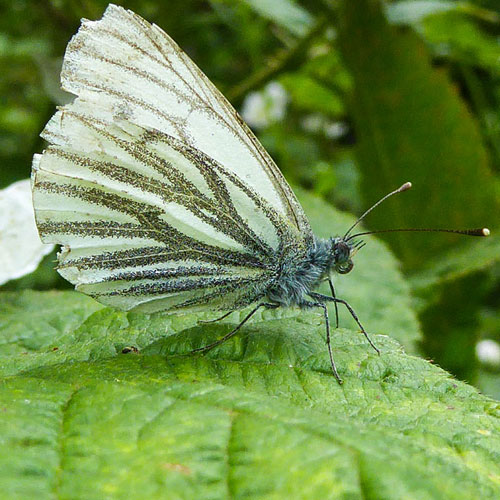
|
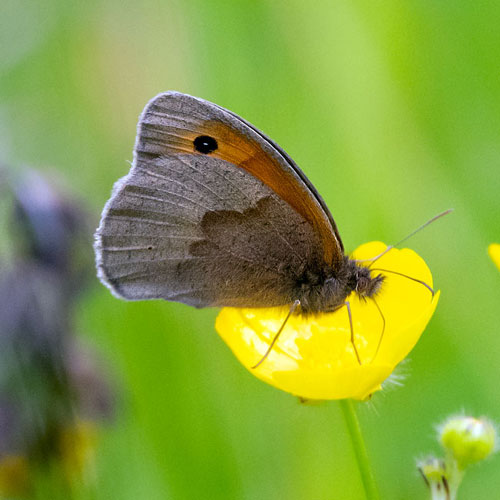
|
| Peacock |
Red Admiral |
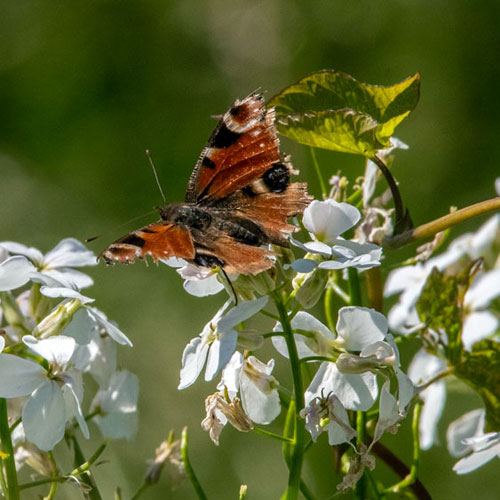
|
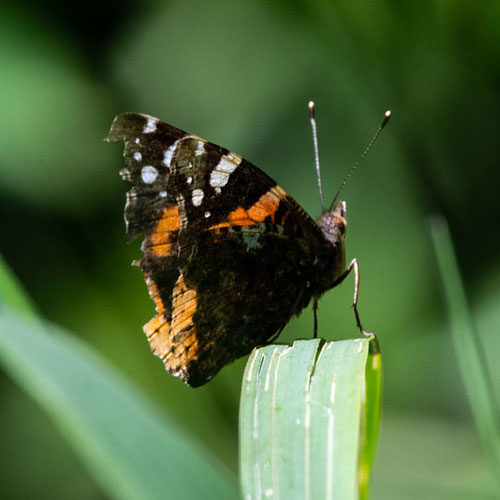
|
| Ringlet |
Small Tortoiseshell |
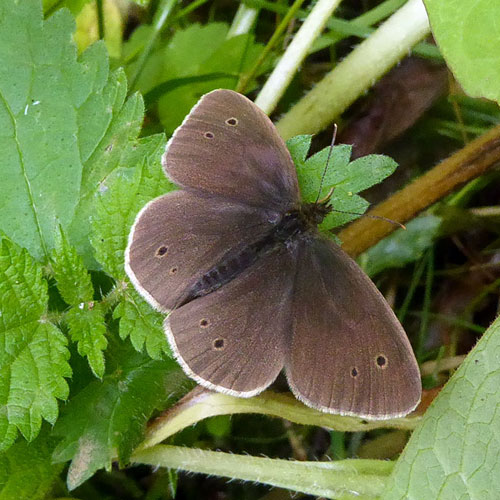
|
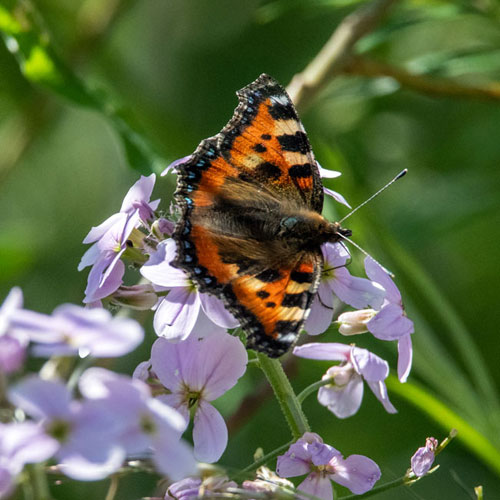
|
FLOWERS 1
| Bogbean |
Bramble |
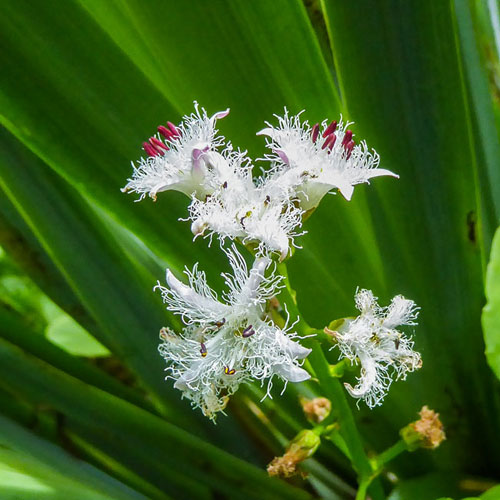
|
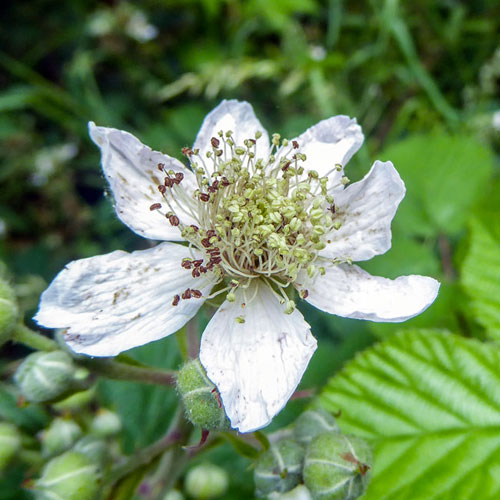
|
| Buddleja |
Common Spotted Orchid |
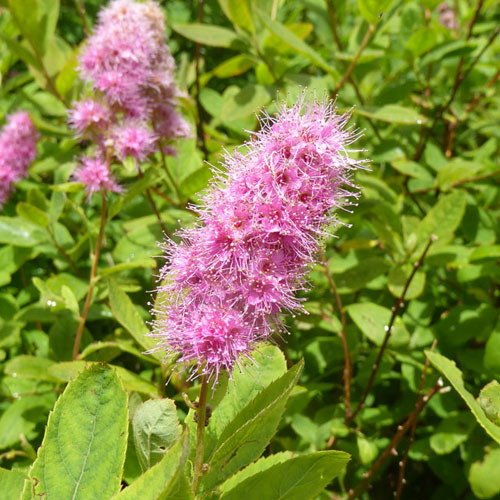
|
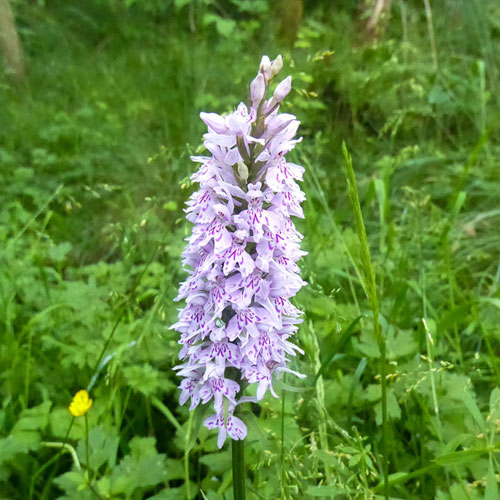
|
| Dog Rose |
Northern Marsh Orchid |
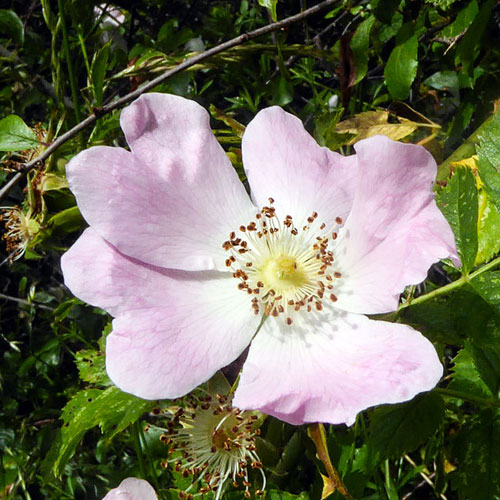
|
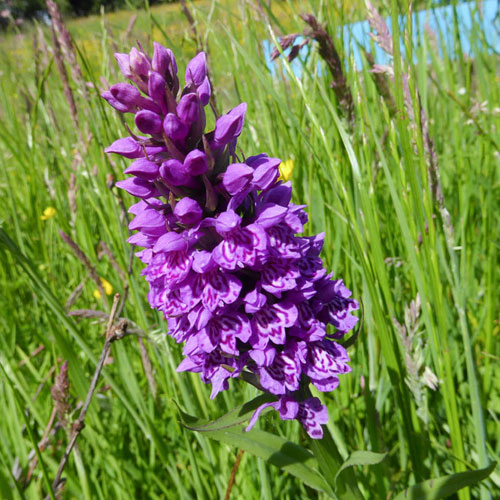
|
INVERTEBRATES
| 7 Spotted Ladybird |
22 Spotted Ladybird |
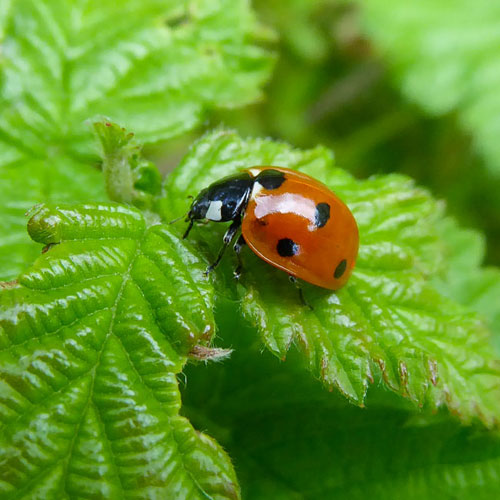
|
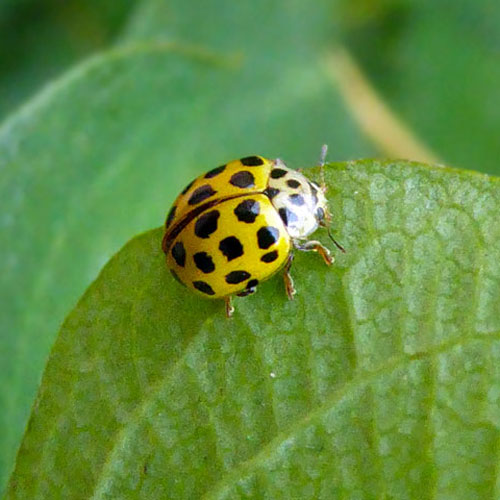
|
| Blue - tailed Dragonfly (Rufescens) |
Female Emerald Damselfly |
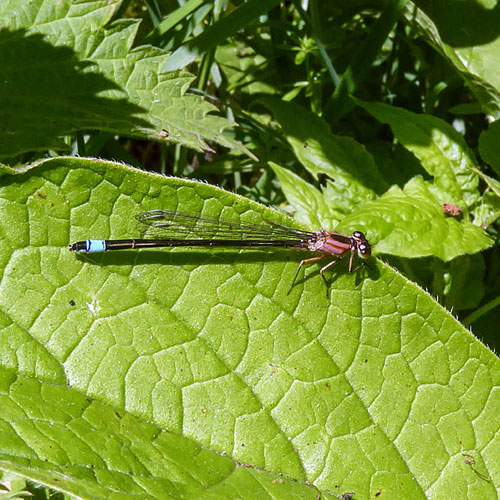
|
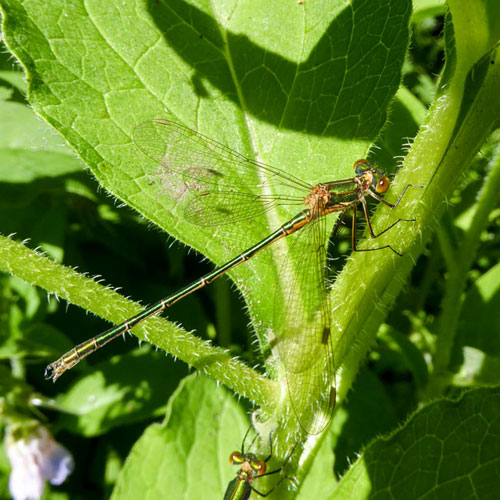
|
| Fly - Lucilia caesar |
Hoverfly - Volucella pellucens |
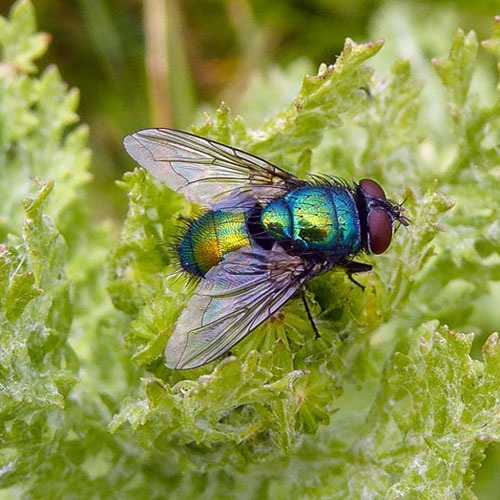
|
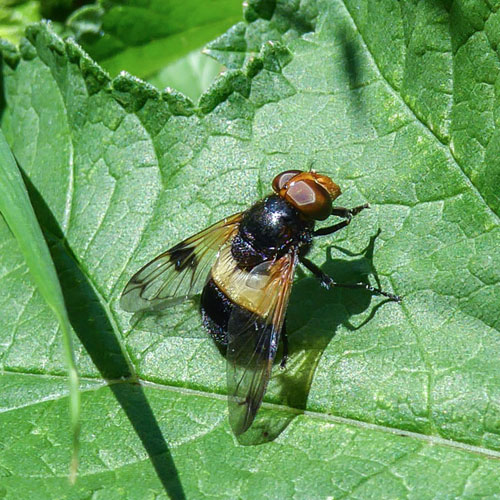
|
SINGING BIRDS
| Chaffinch |
Pied Wagtail |
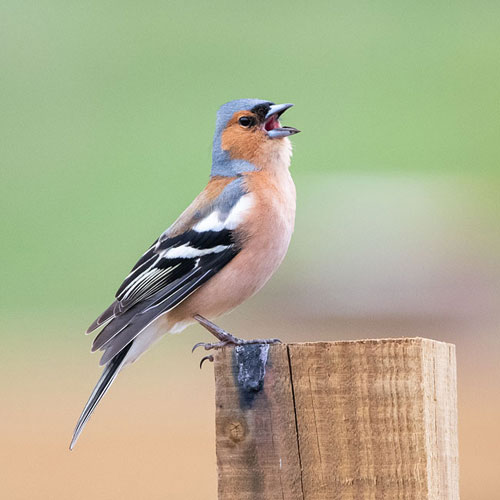
|
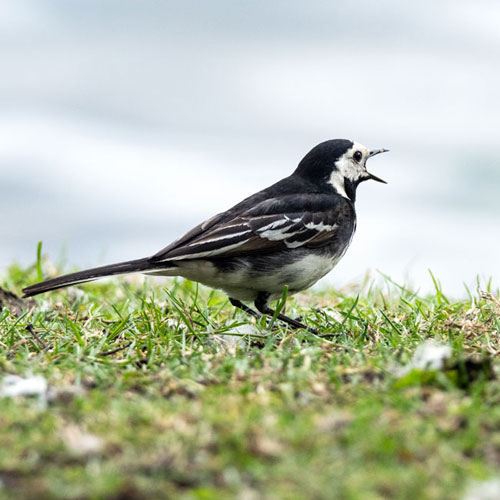
|
| Willow Warbler |
Wren |
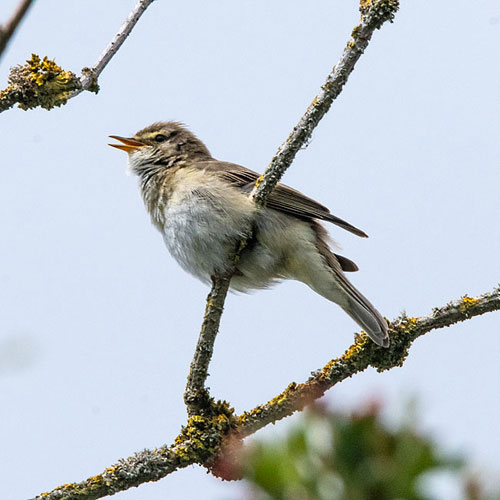
|
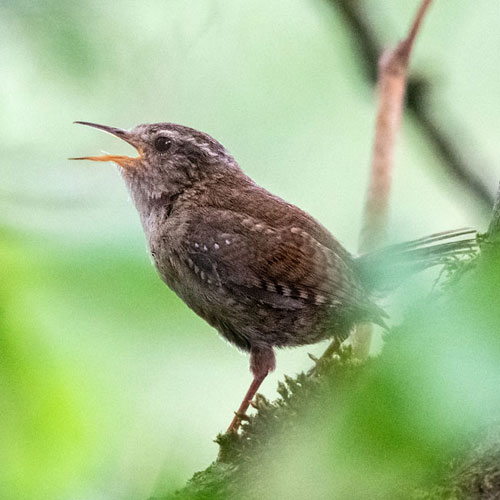
|
WILD FLOWERS 2
| French Cranesbill |
Hairy St John's Wort |
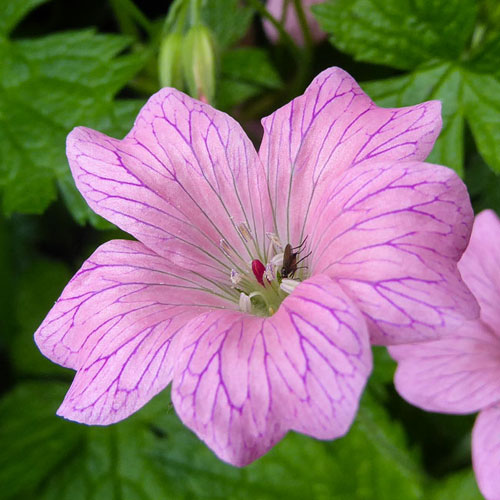
|
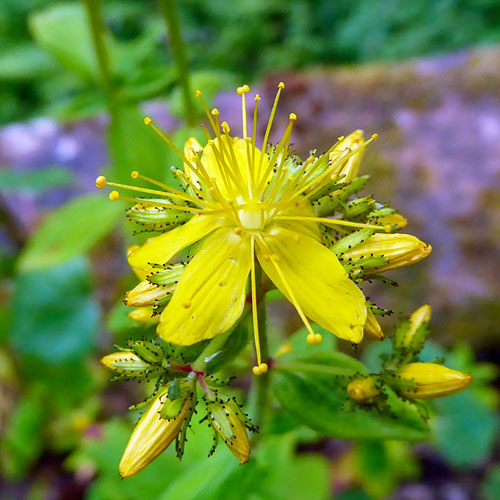
|
| Pink Sorrel |
Purple Iris |
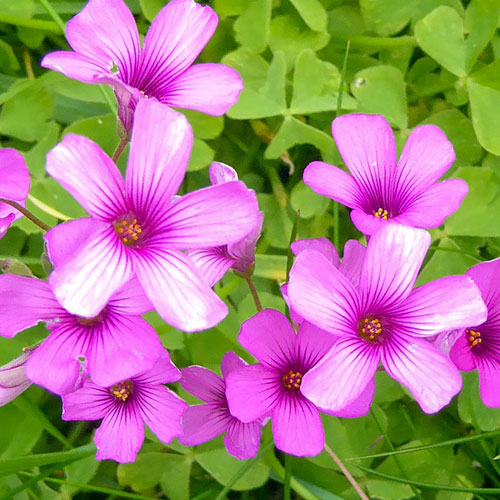
|
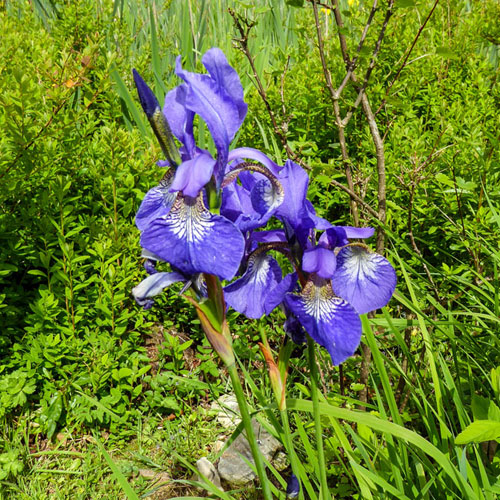
|
| Spring Squill |
Yellow Flag Iris |
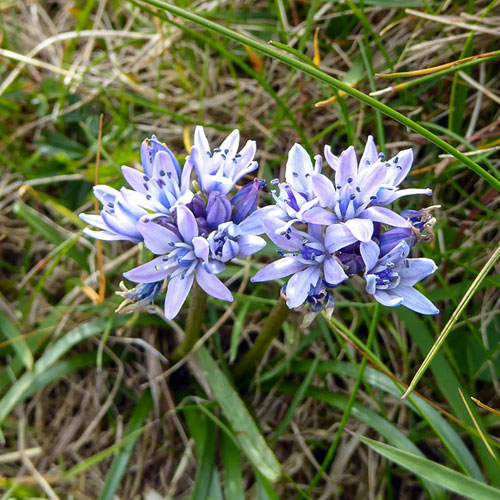 |
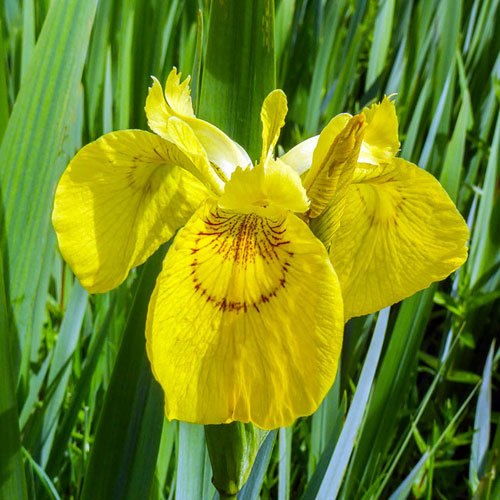 |
WATER BIRDS
| White Egret |
Greylag Goose |
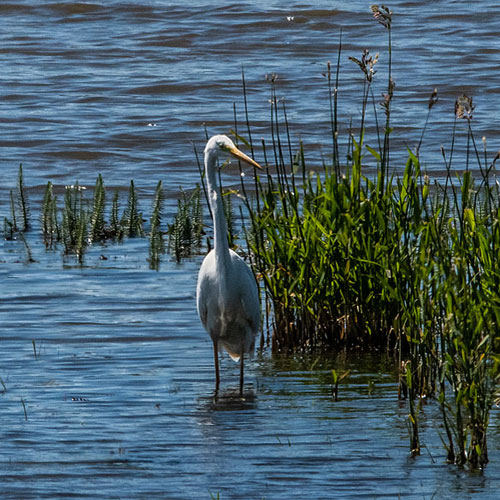
|
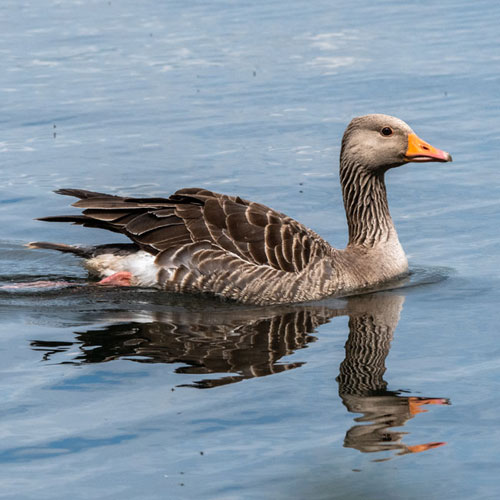
|
| Little Grebe |
Mute Swan |
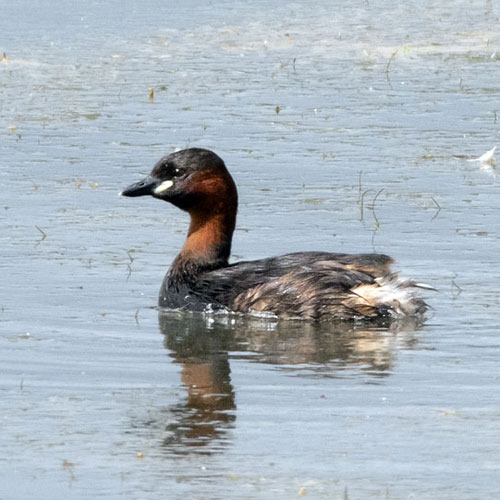
|
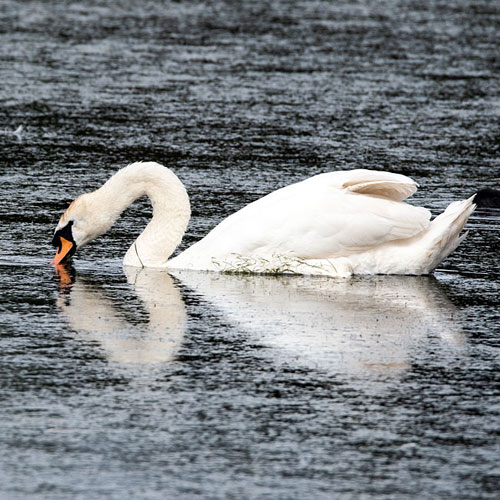
|
| Ringed Plover |
Tufted Duck |
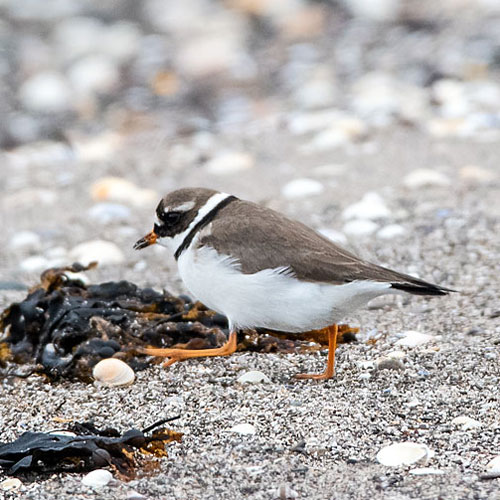
|
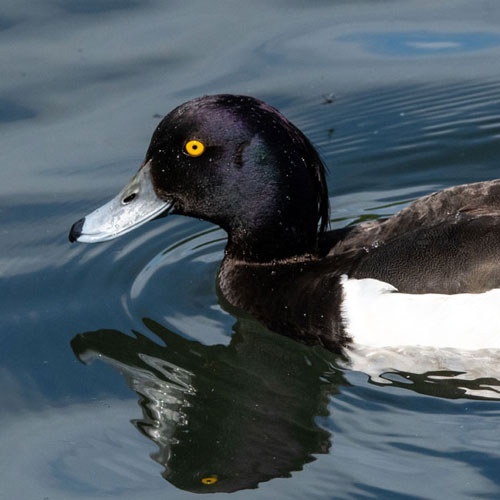
|
FURRY ANIMALS
| Grey Squirrel |
Roe Deer |
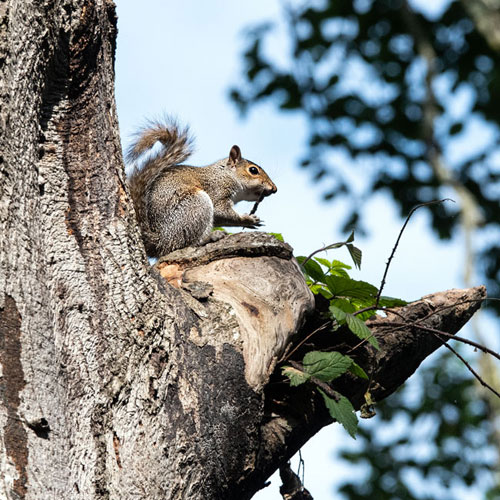
|
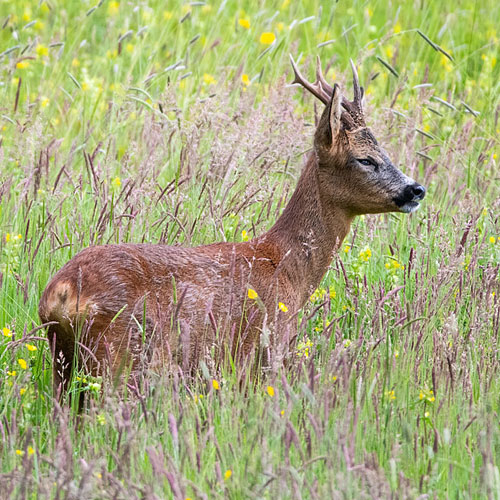
|
Back To Top
|

